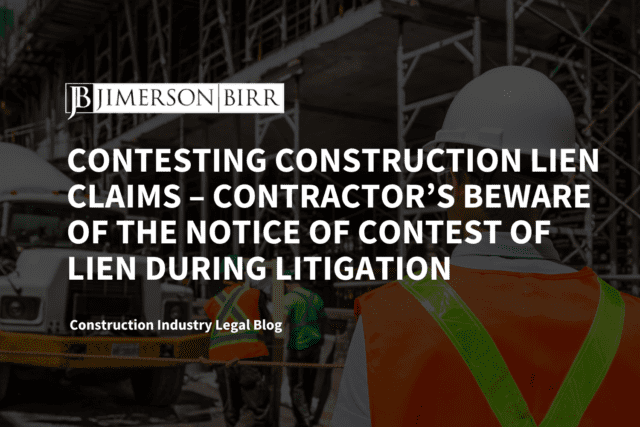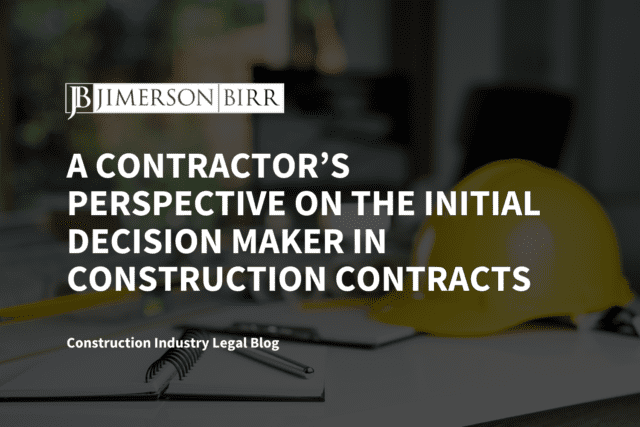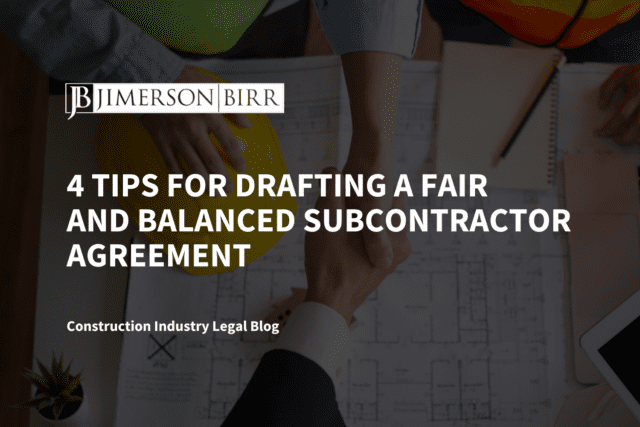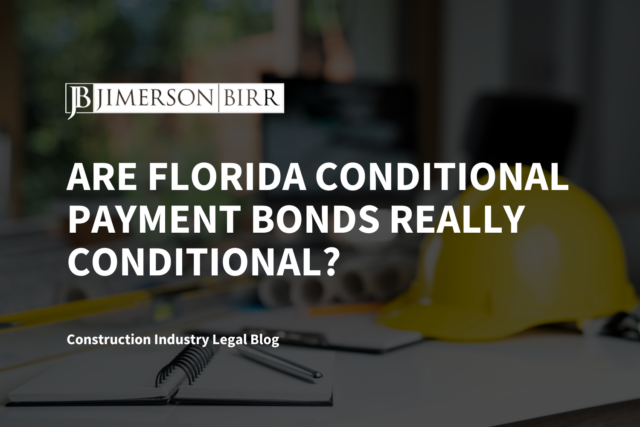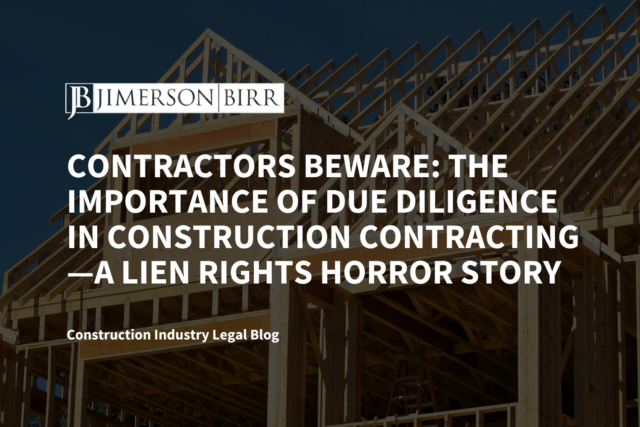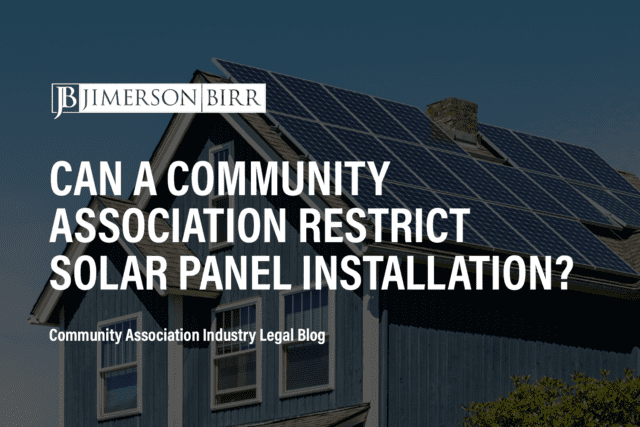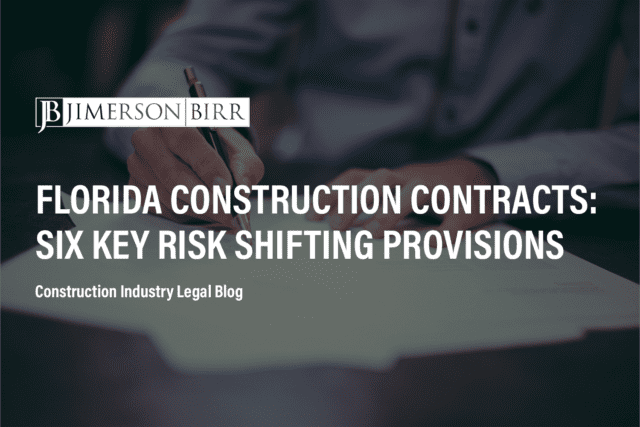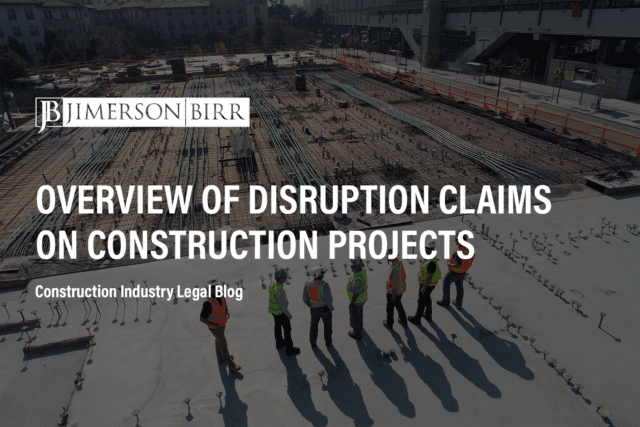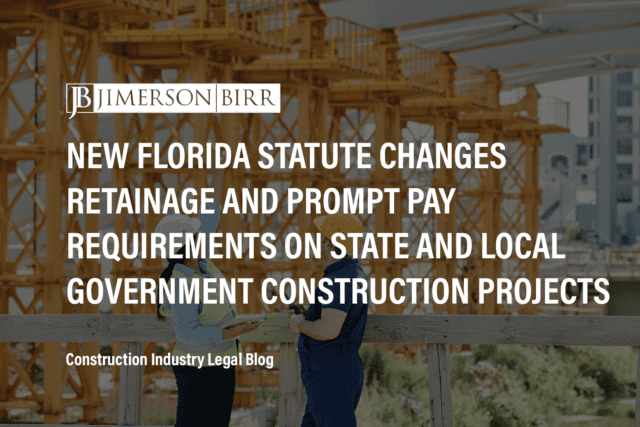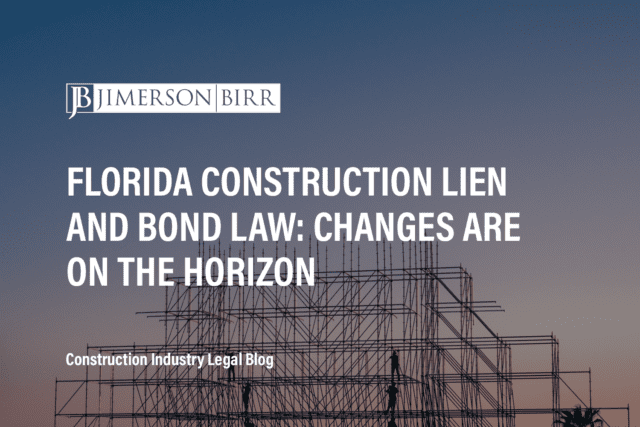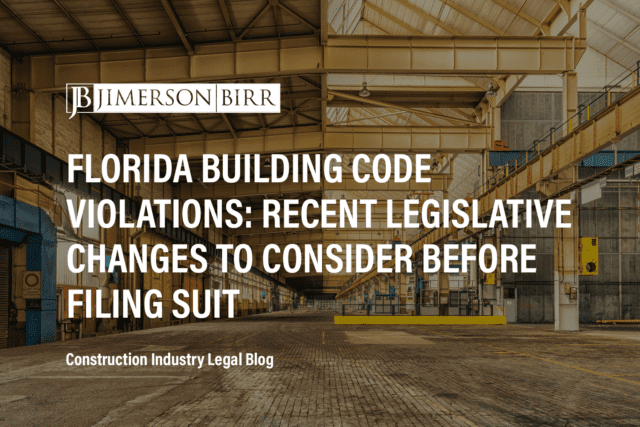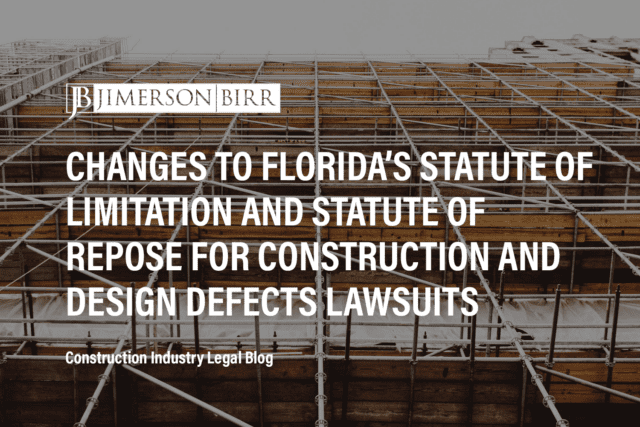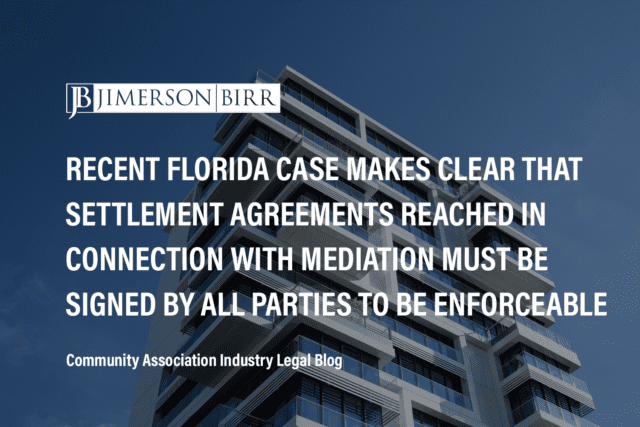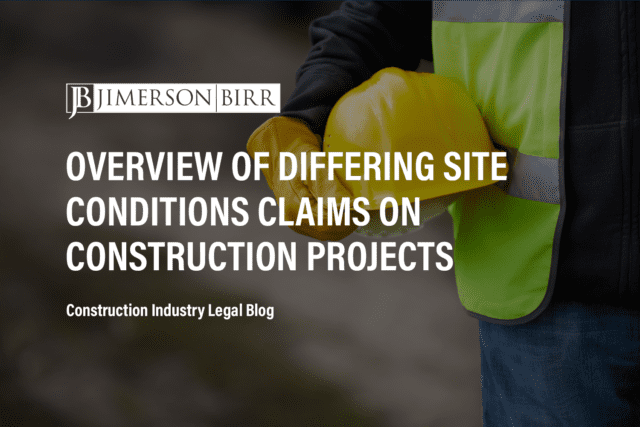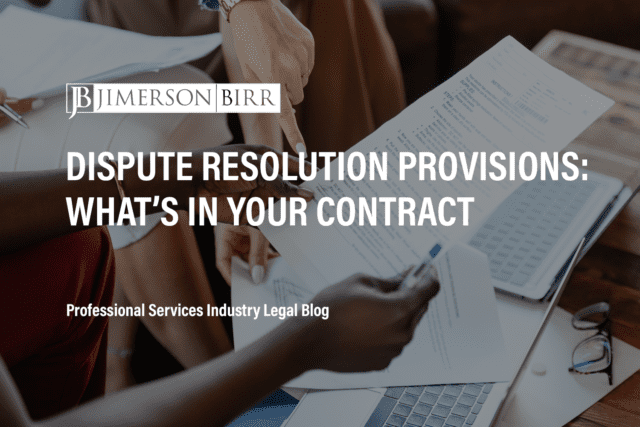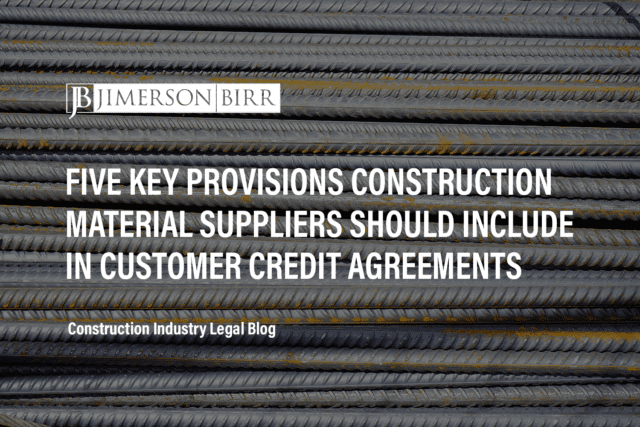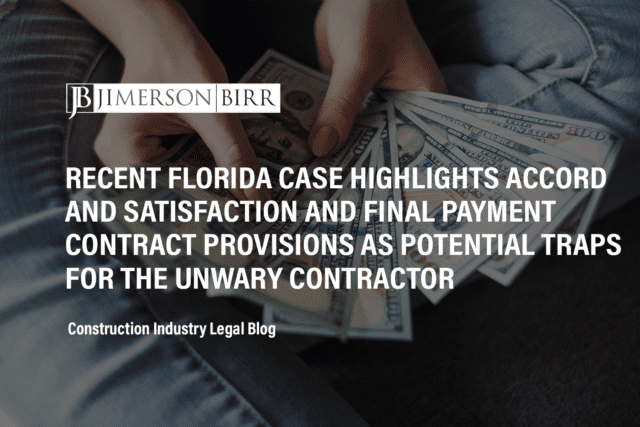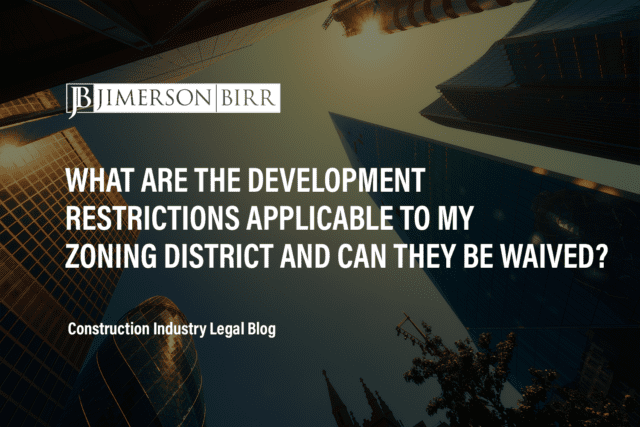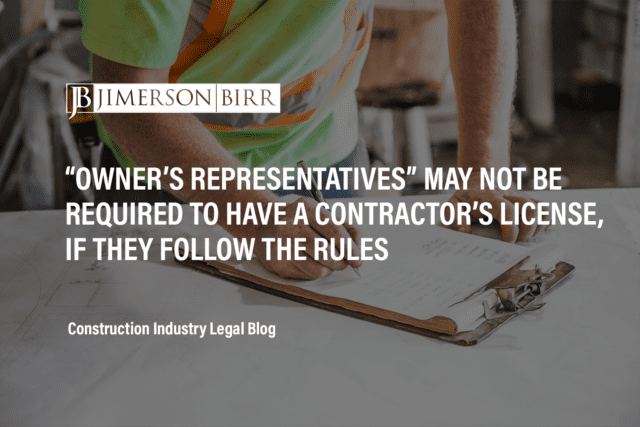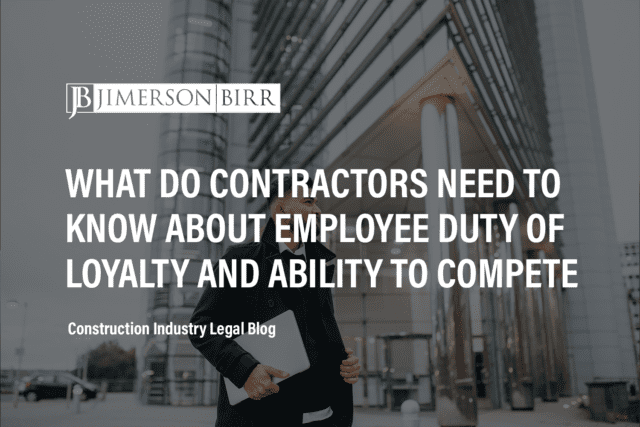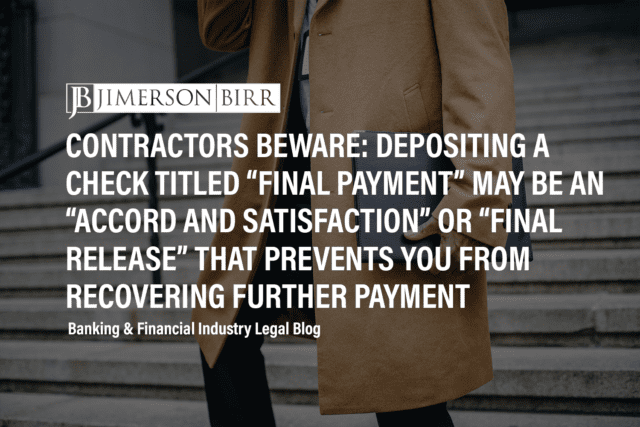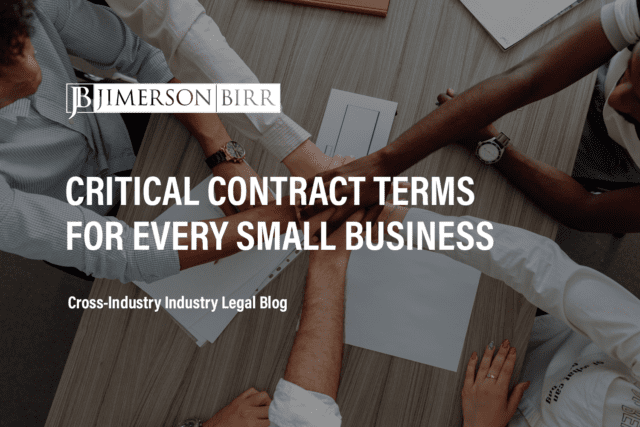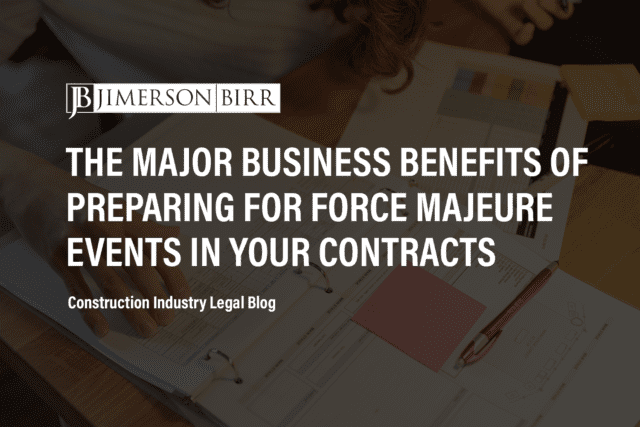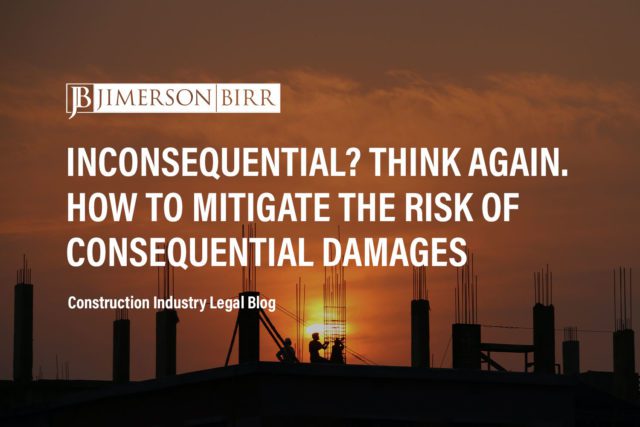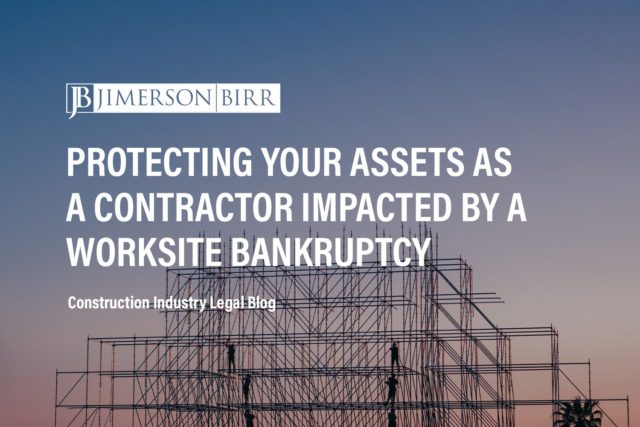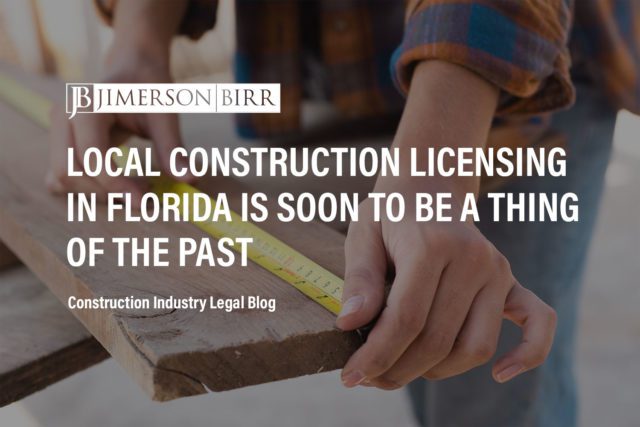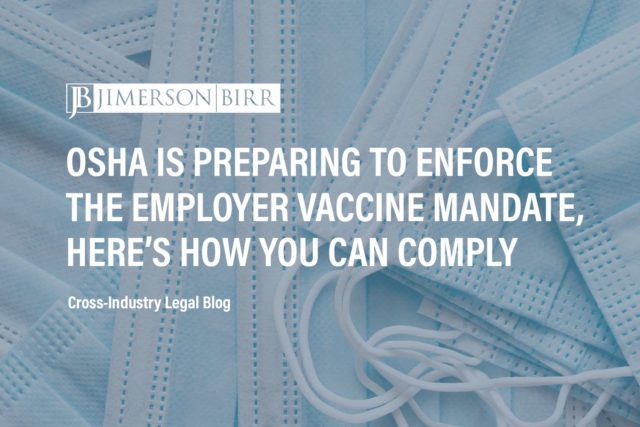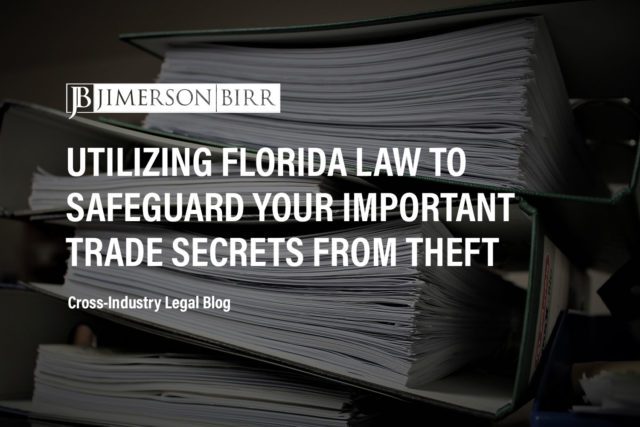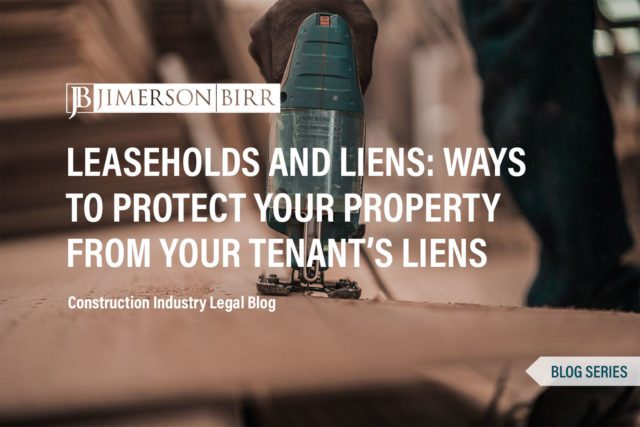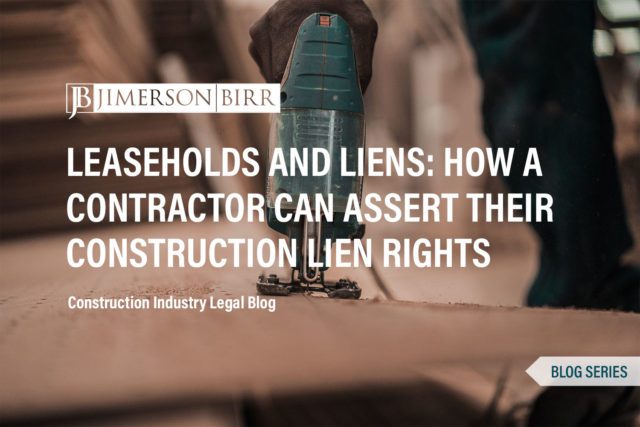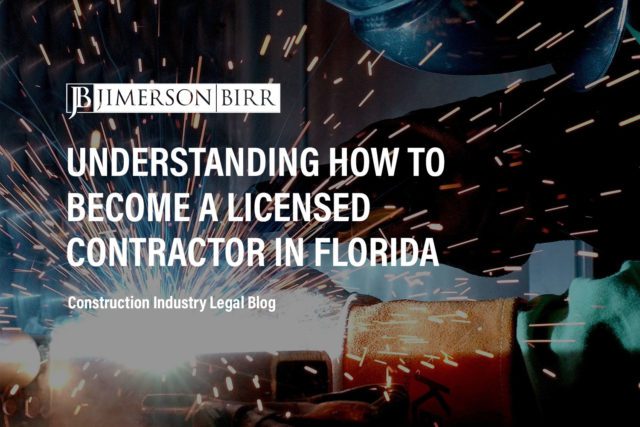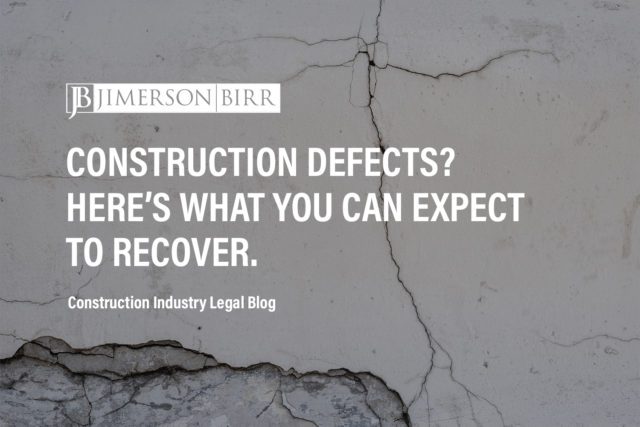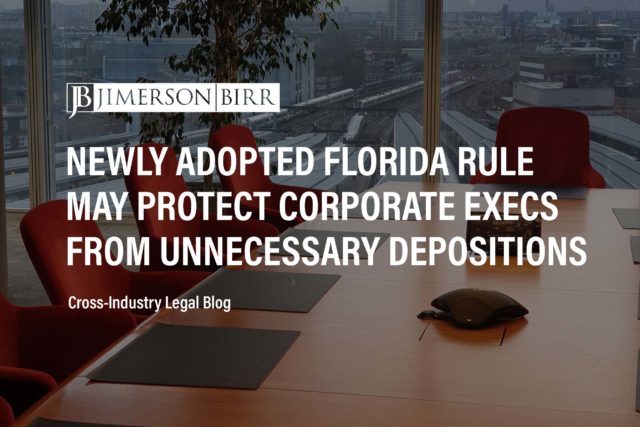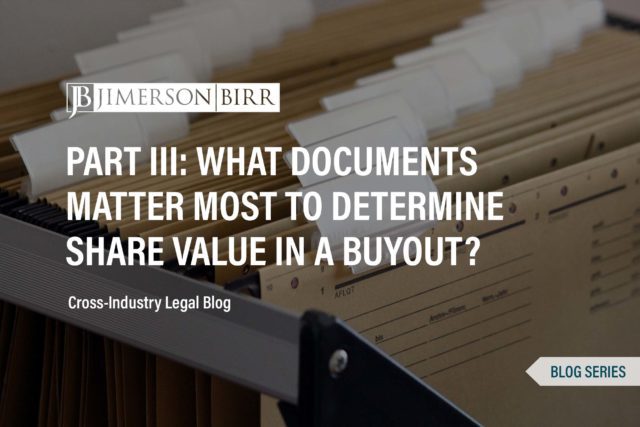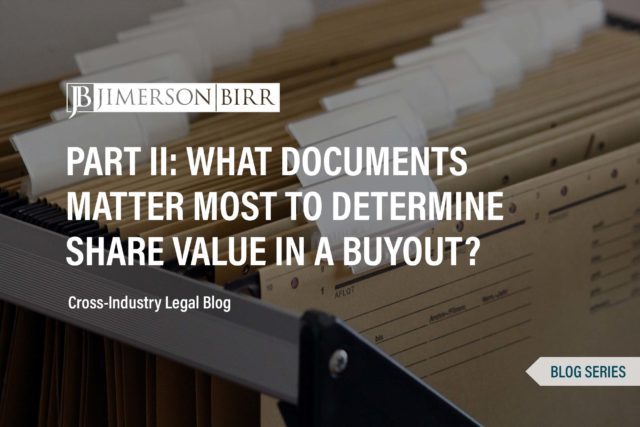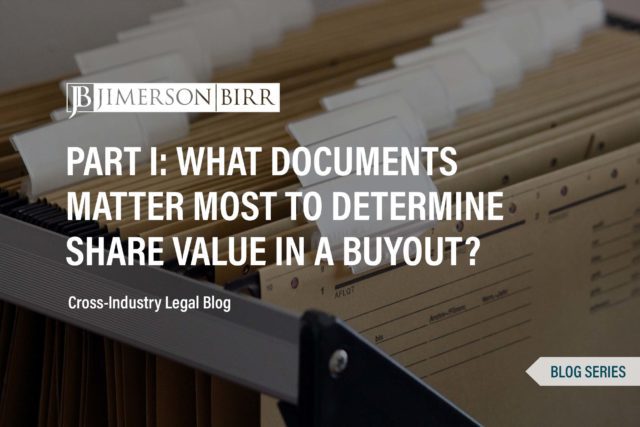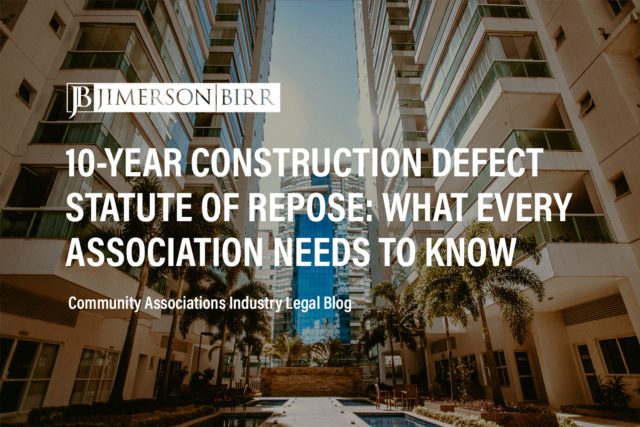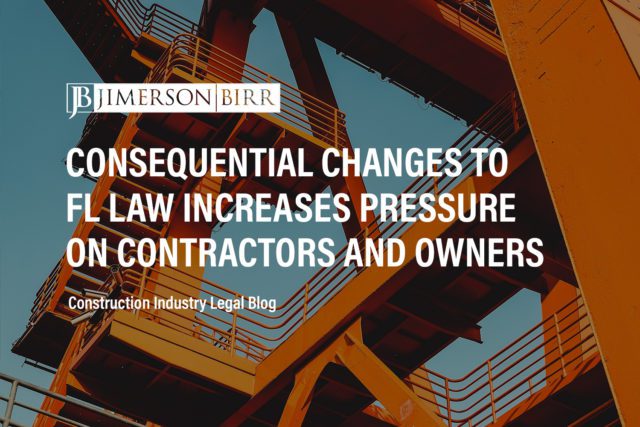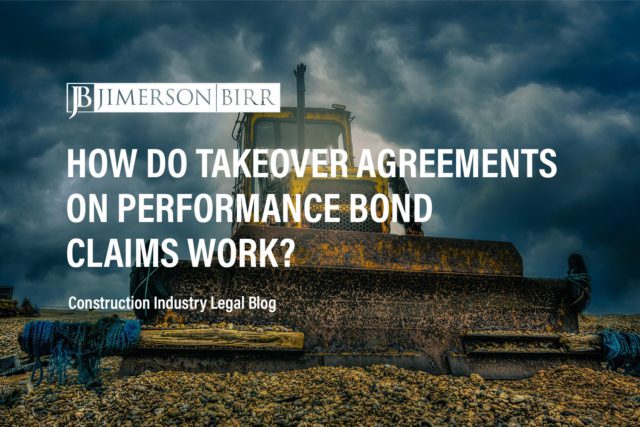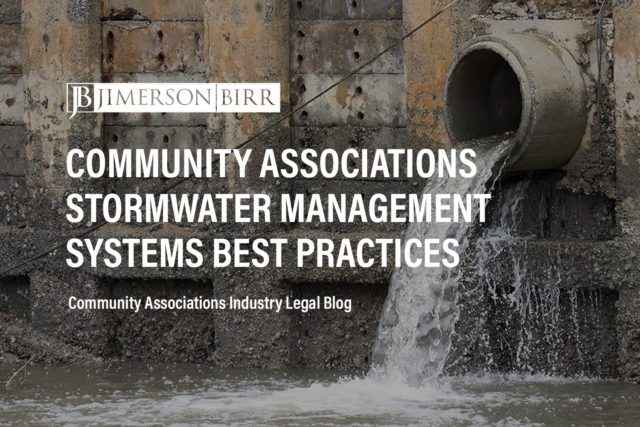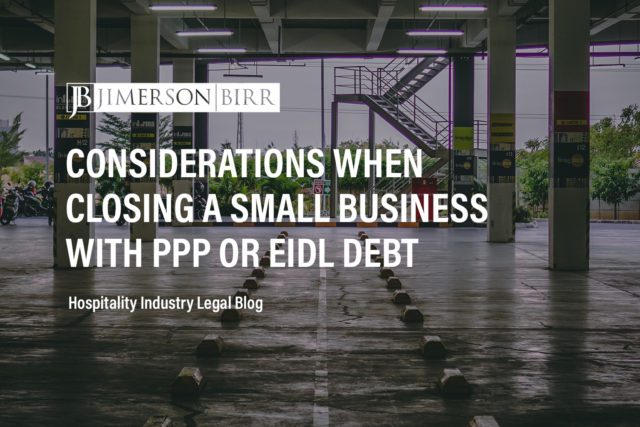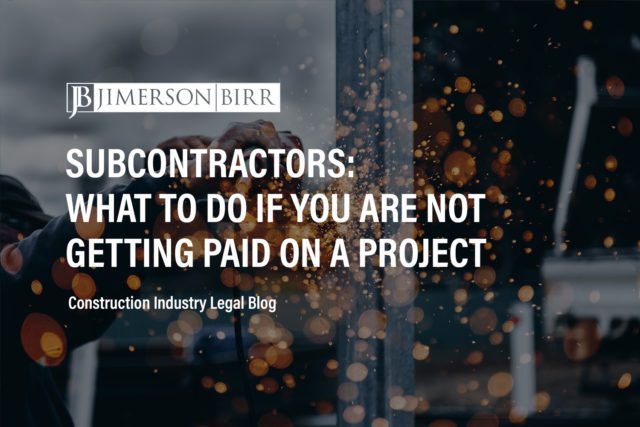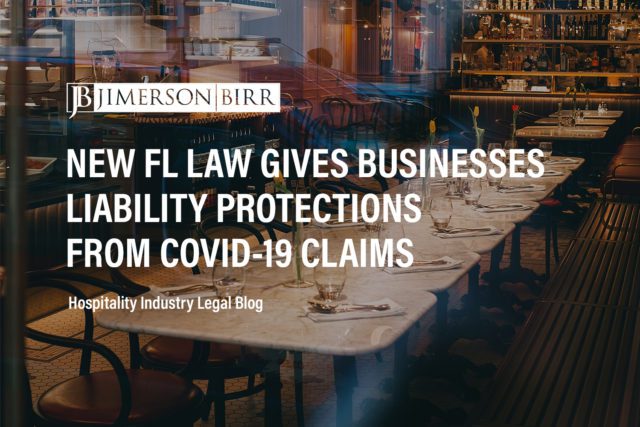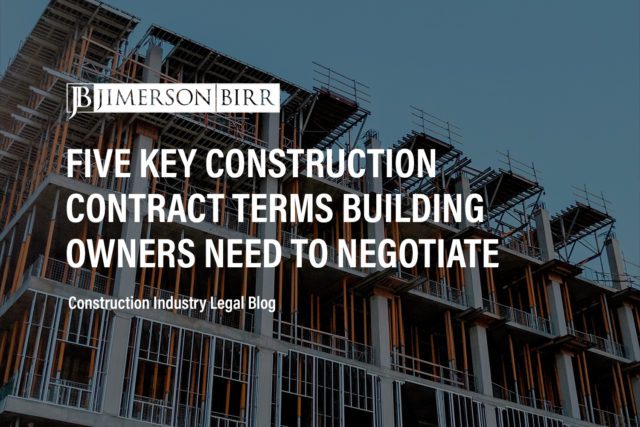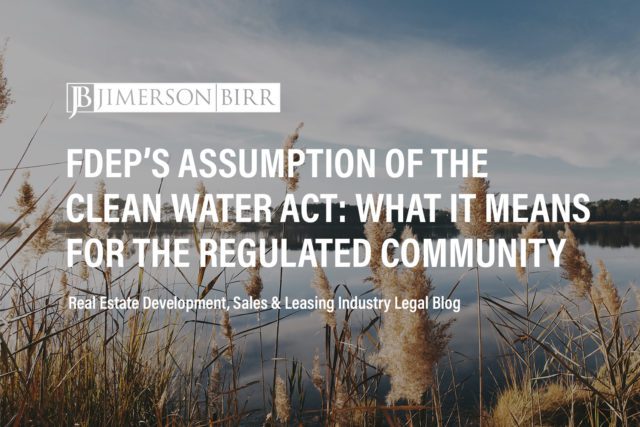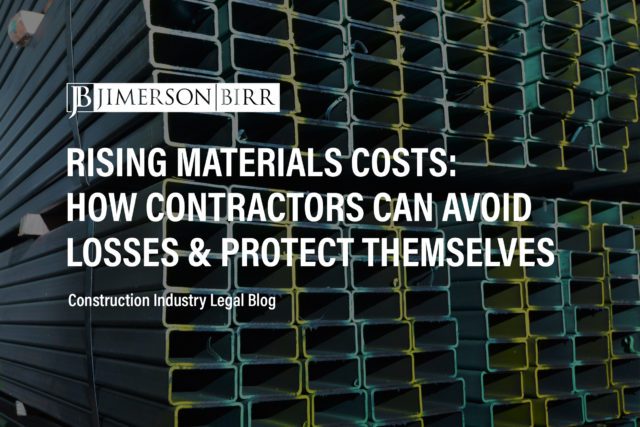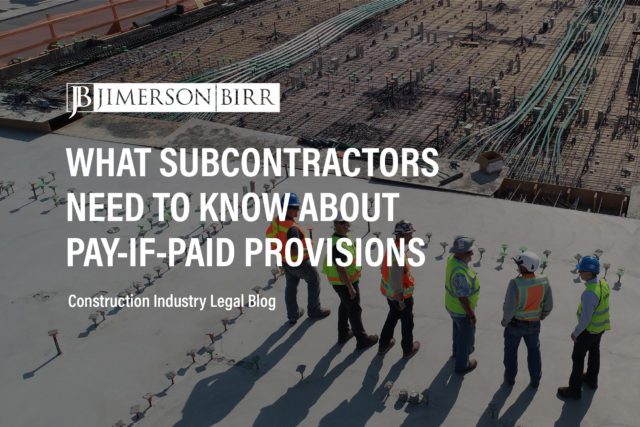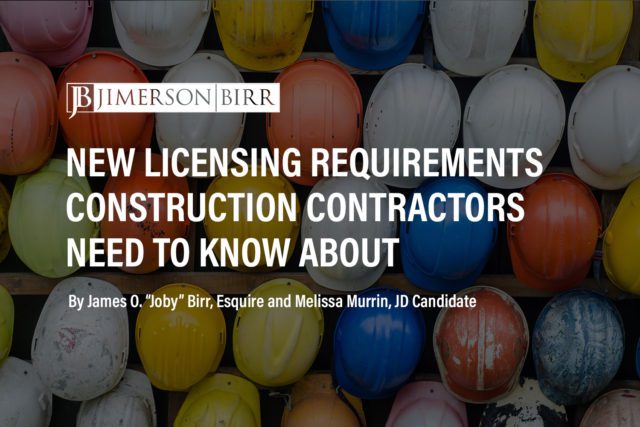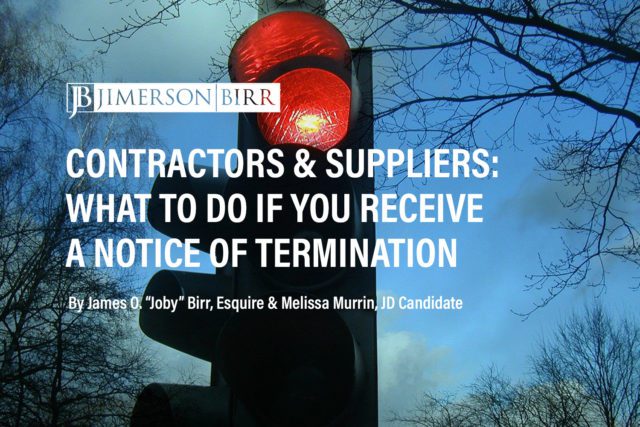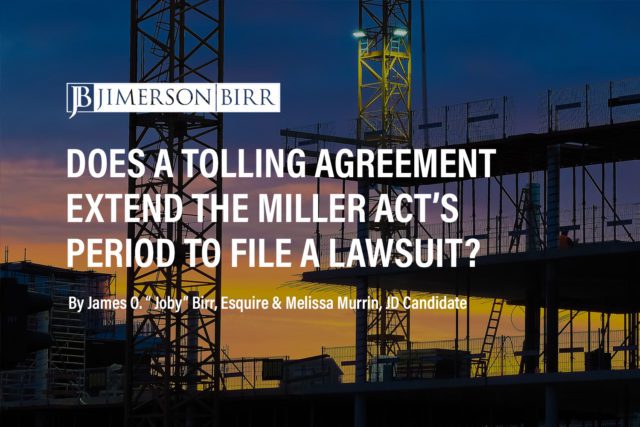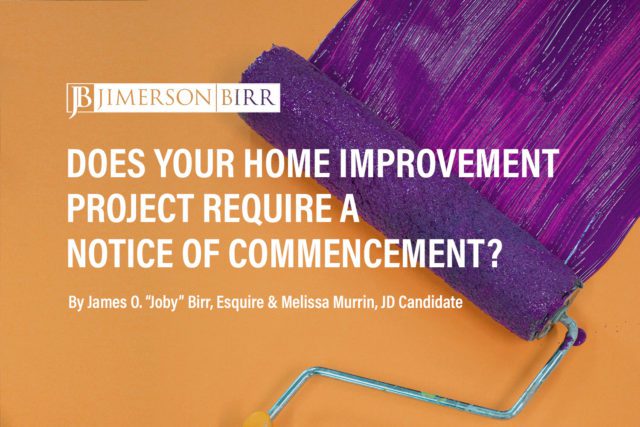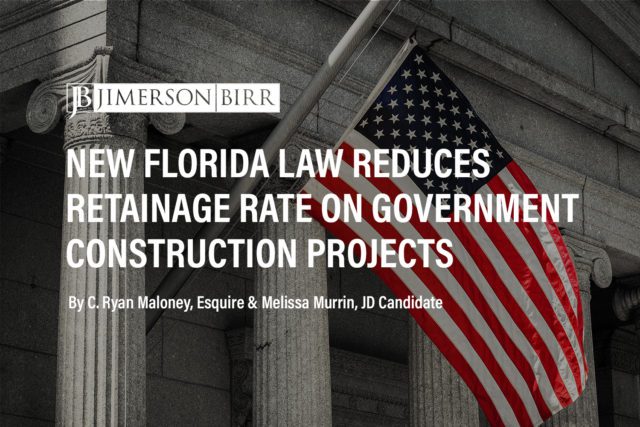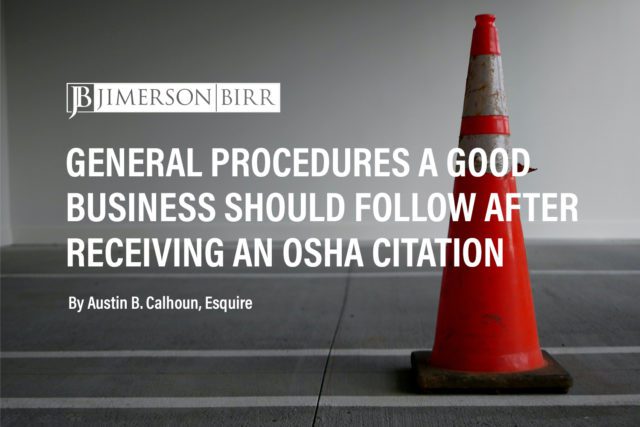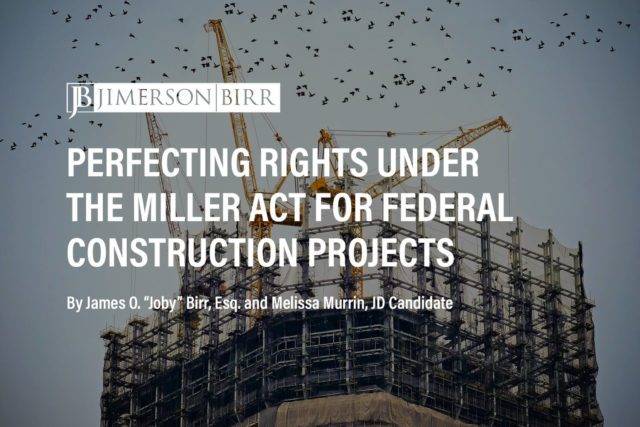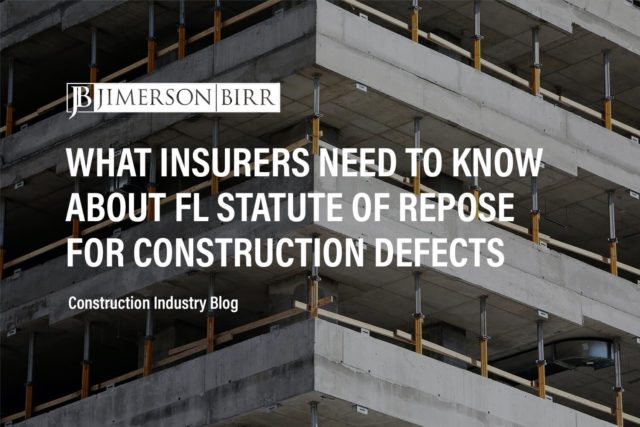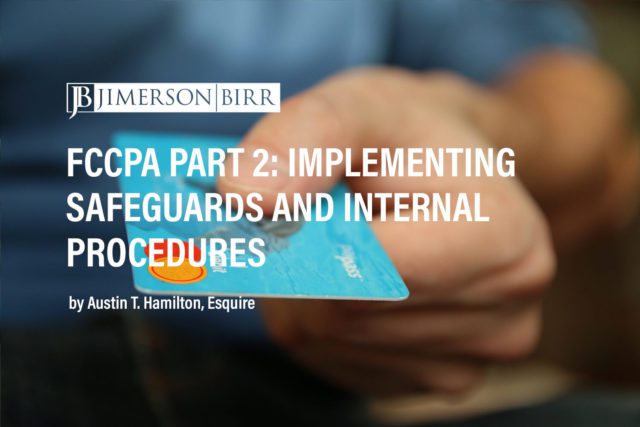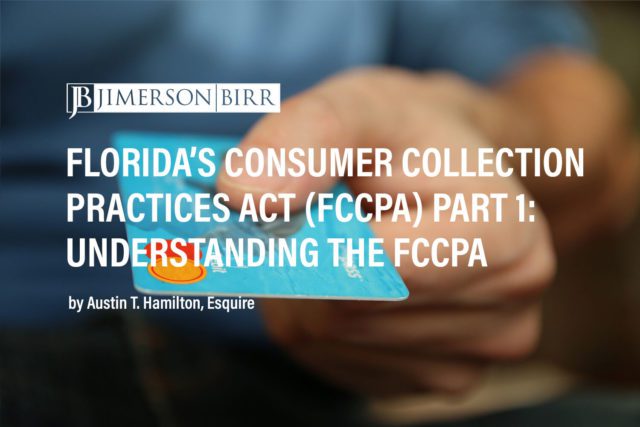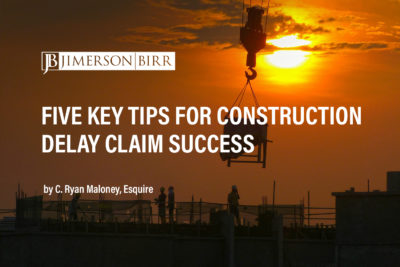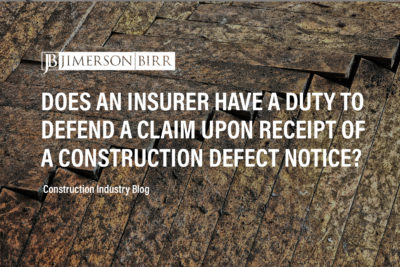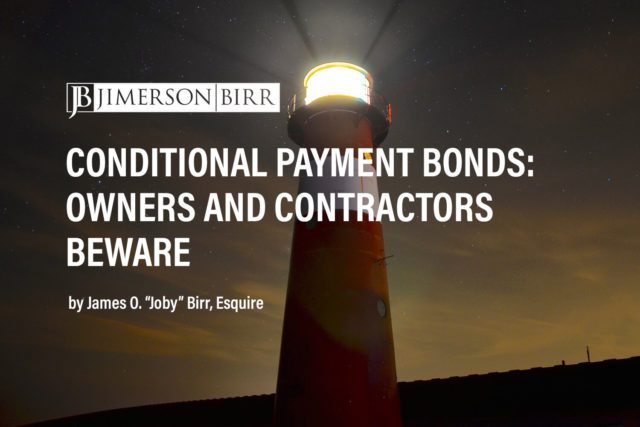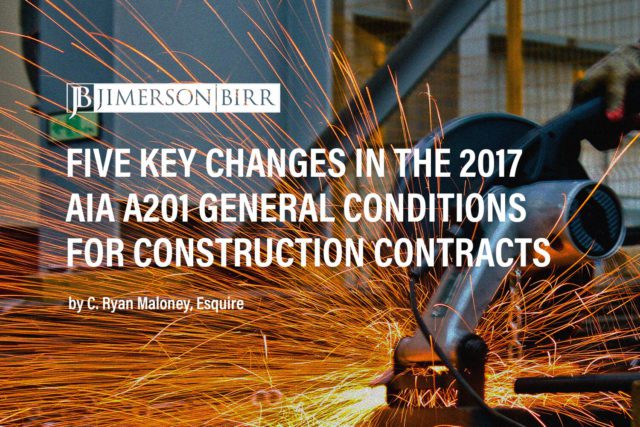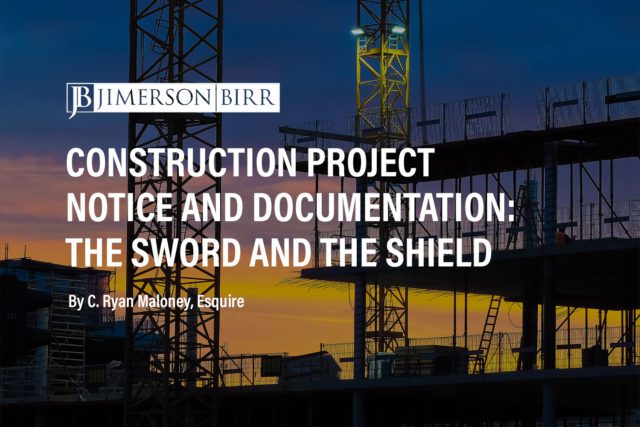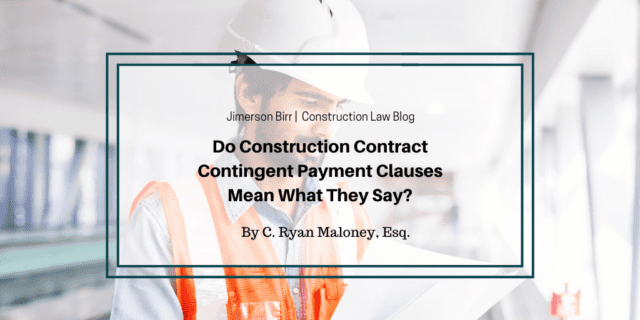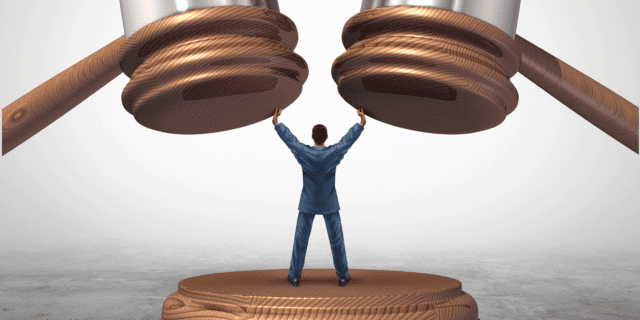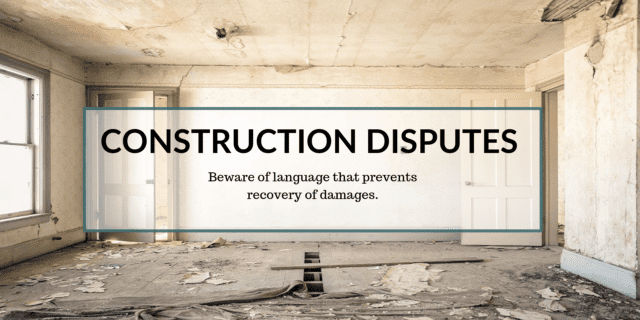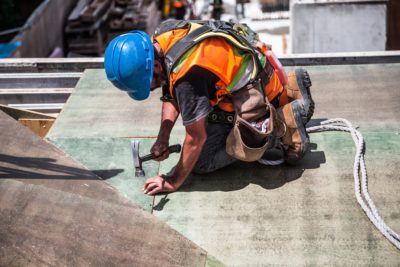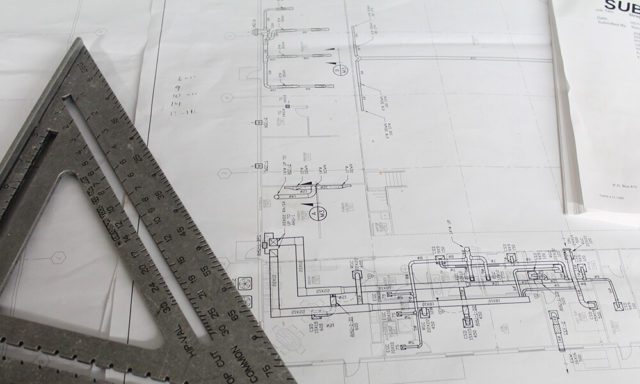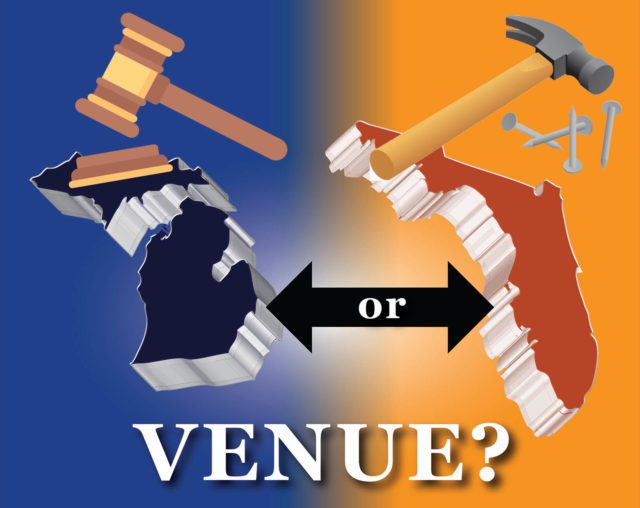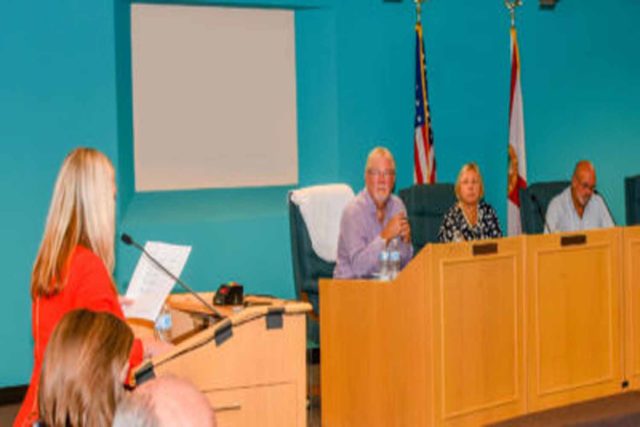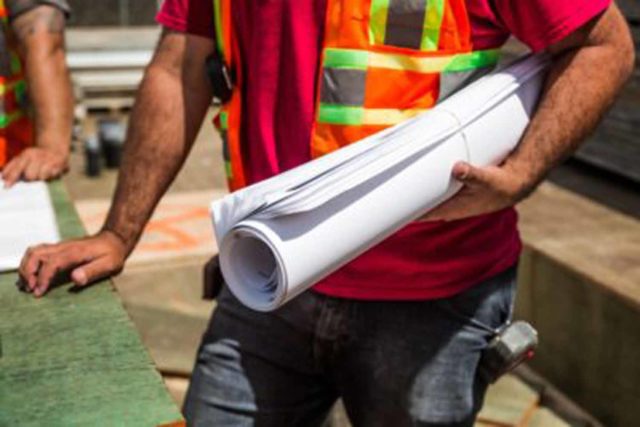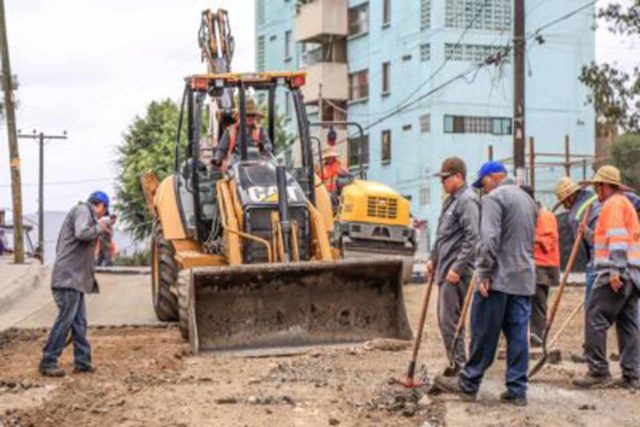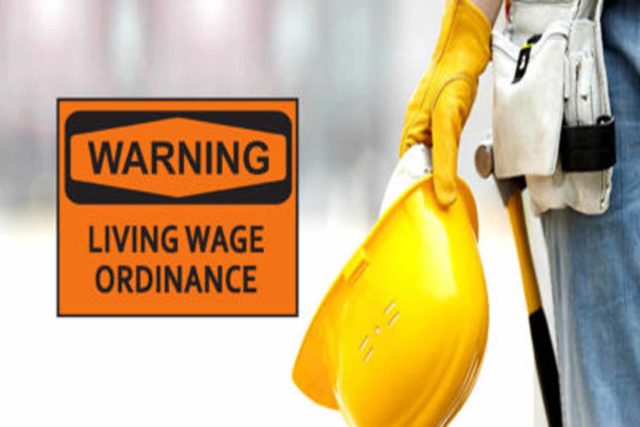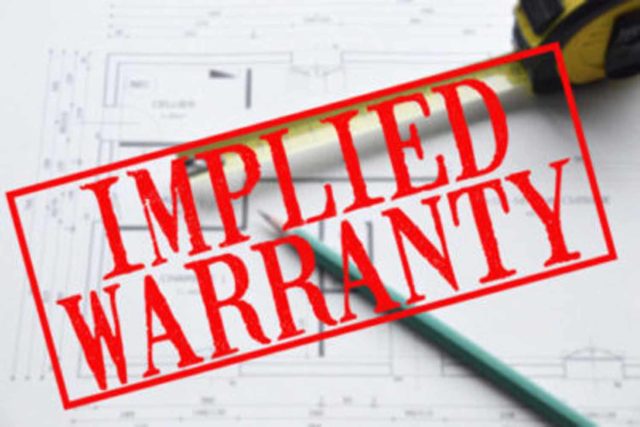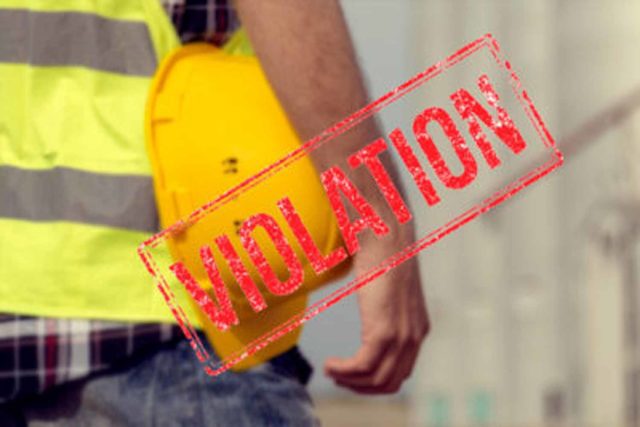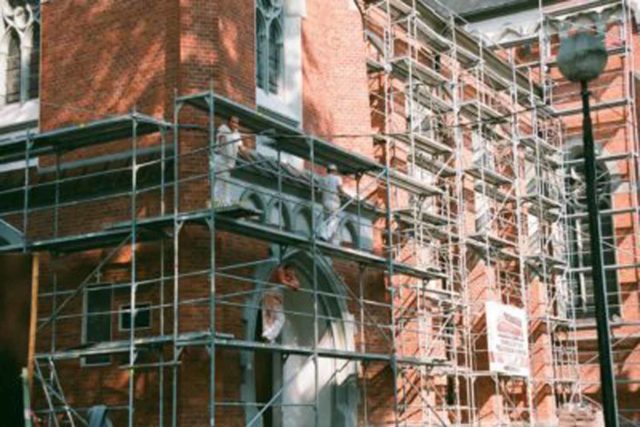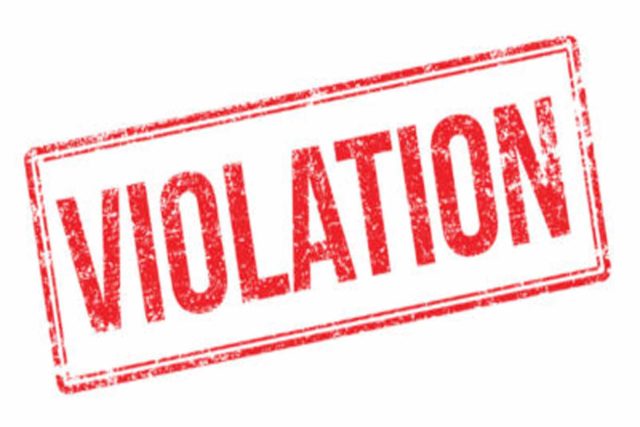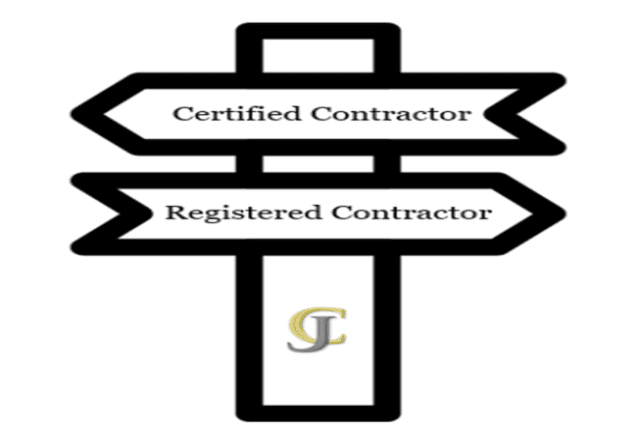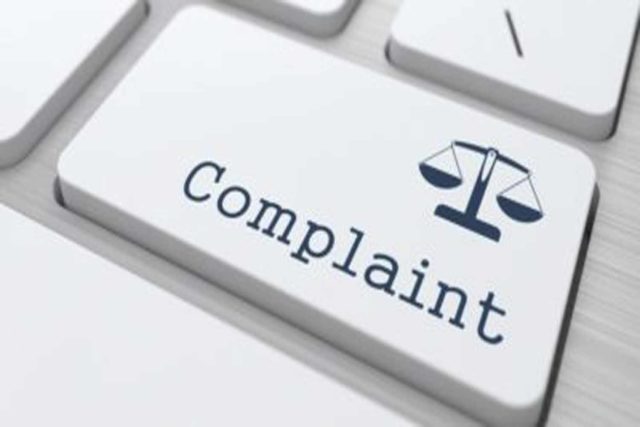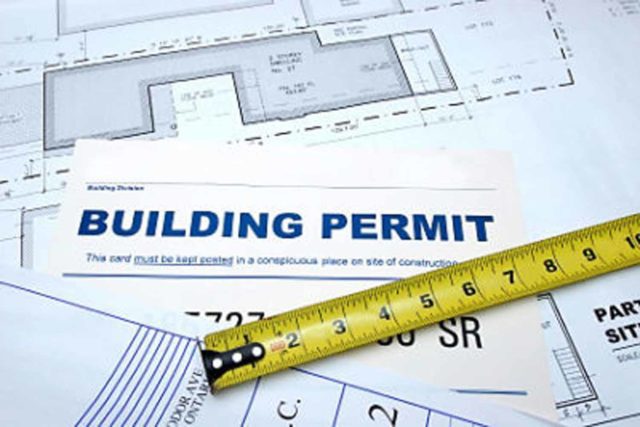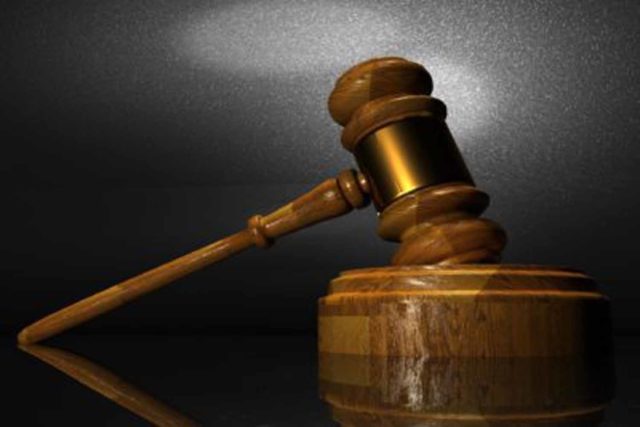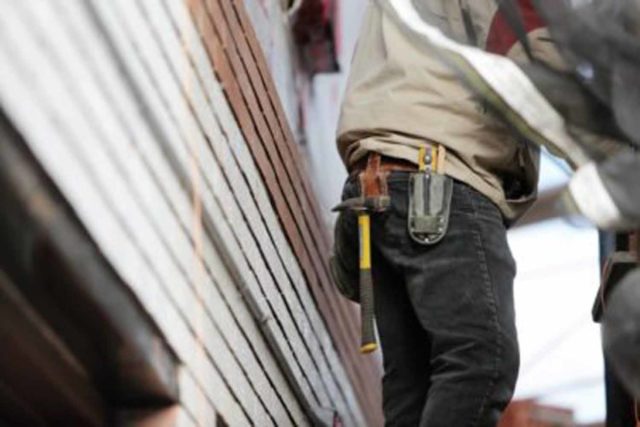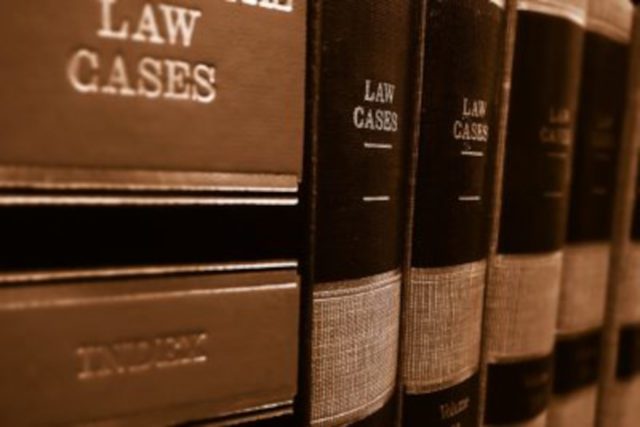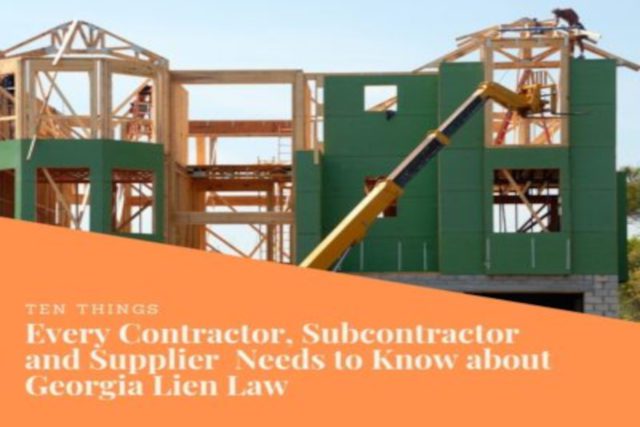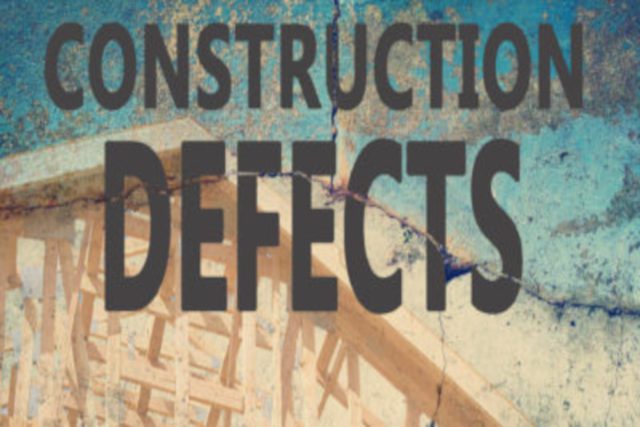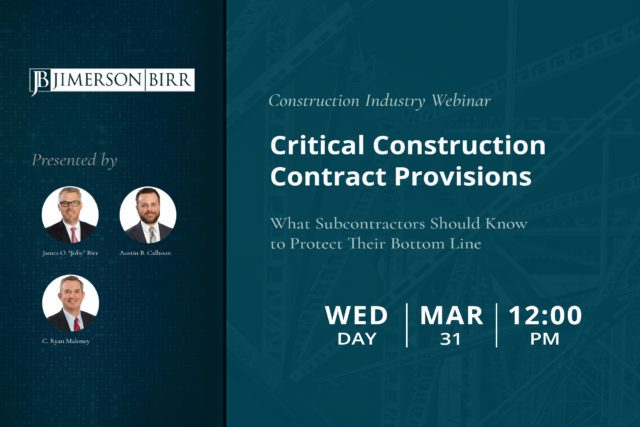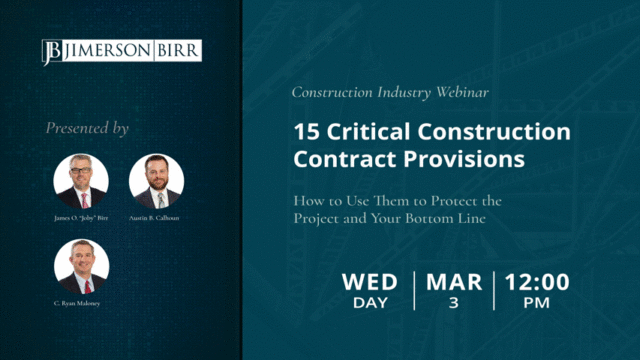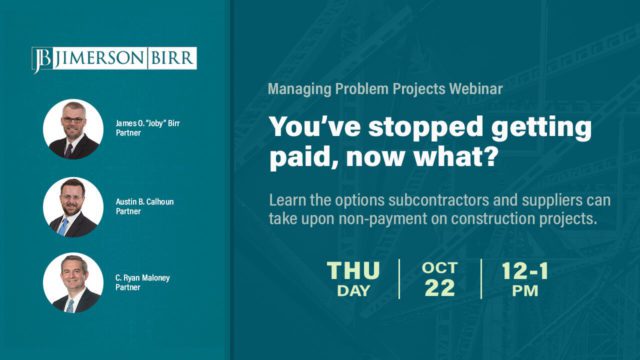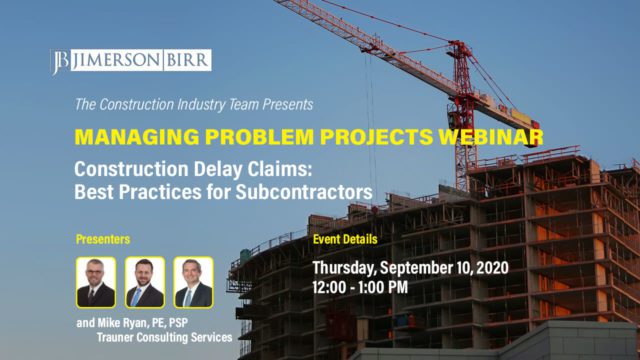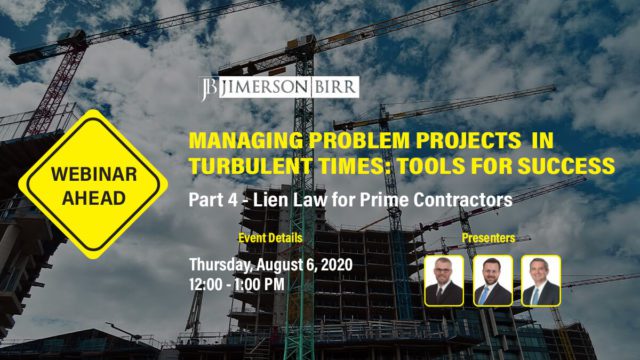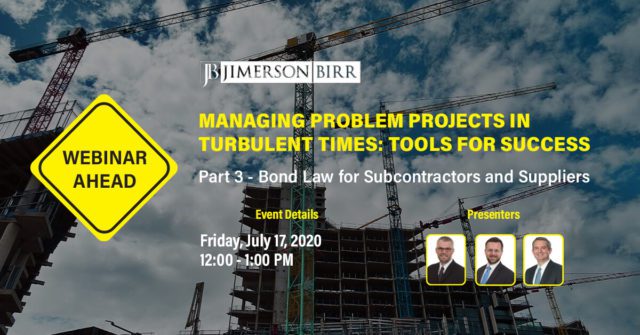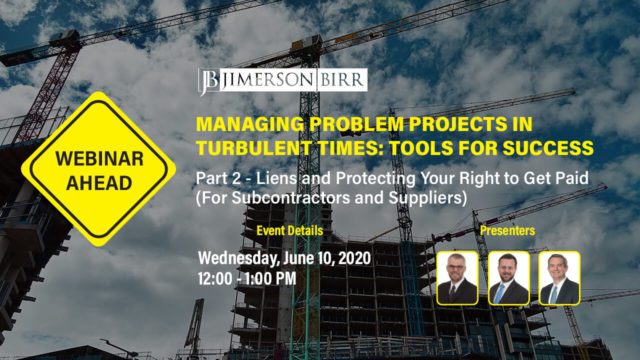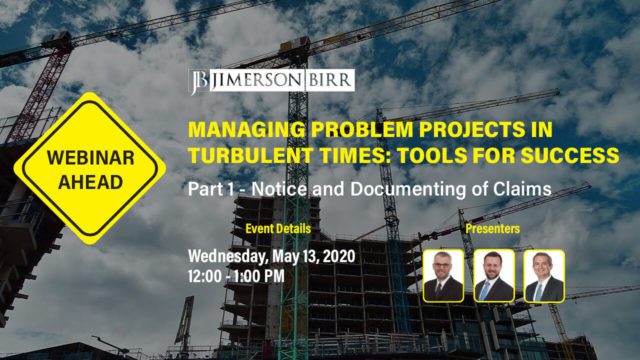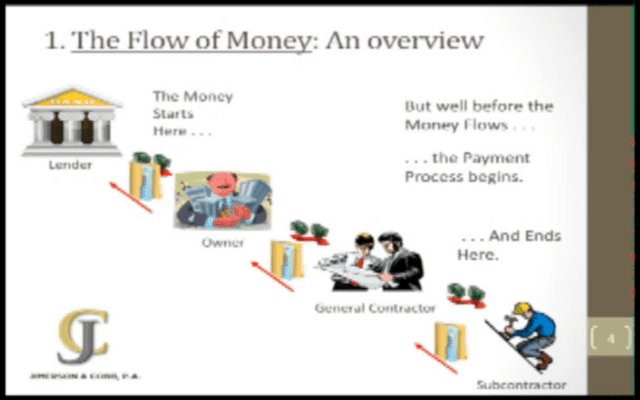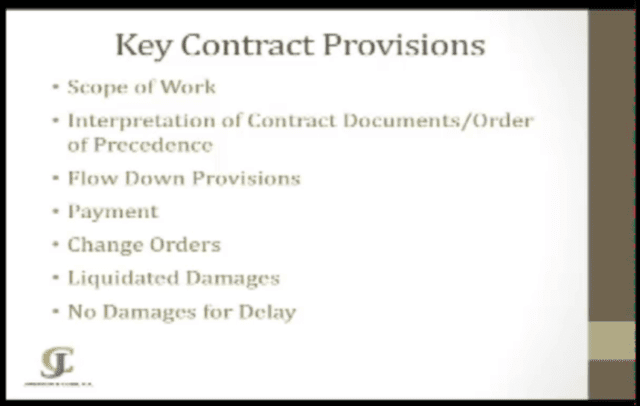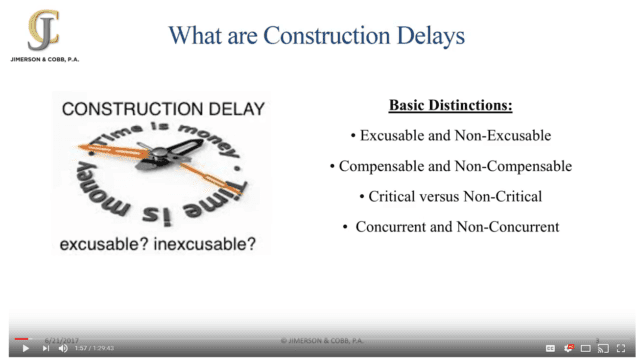View & Print FAQ
Q: What is Eminent Domain?
A: “Eminent Domain” is currently defined as the power of the nation or a sovereign state to take or to authorize the taking of private property for public use without the owner’s consent, conditioned on the payment of just compensation. The term generally refers to a legal proceeding in which the government asserts its authority to condemn or take property.
The Fifth Amendment to the United States Constitution allows the government to take private property if the taking is for a public use and the owner is “justly compensated” (usually, paid fair market value) for his or her loss. A public use is virtually anything that is sanctioned by a federal or state legislative body, but such uses may include roads, parks, reservoirs, schools, hospitals, or other public buildings. This procedure is sometimes called condemnation, a taking, or expropriation. For example, the proceedings to take land under eminent domain are typically referred to as “condemnation” proceedings. In a condemnation proceeding, a property owner asserts that governmental regulation constitutes a taking of his or her property without just compensation. Most eminent domain takings that occur in the State of Florida occur through action of the state or its agencies such as the Florida Department of Transportation. The terms eminent domain and condemnation refer to intentional takings by the government through the condemnation process. The terms should be considered synonymously in the context of the government going after your property.
Q: Where does the state of Florida get the power to use Eminent Domain?
A: The exercise of the power of eminent domain is subject to all constitutional prohibitions found in both the federal and state constitutions. The power is chiefly limited by the federal and state constitutional provisions that no person may be deprived of property without due process of law.
The Fifth Amendment to the U.S. Constitution reads:
“No person shall be held to answer for a capital, or otherwise infamous crime, unless on a presentment or indictment of a Grand Jury, except in cases arising in the land or naval forces, or in the Militia, when in actual service in time of War or public danger; nor shall any person be subject for the same offence to be twice put in jeopardy of life or limb; nor shall be compelled in any criminal case to be a witness against himself, nor be deprived of life, liberty, or property, without due process of law; nor shall private property be taken for public use, without just compensation.”
The Takings Clause of the Fifth Amendment is made applicable to the states through the Due Process Clause of the 14th Amendment; this clause does not prohibit the taking of private property but, instead, places condition on the exercise of this power. The State of Florida, its agencies, and its political subdivisions are, thus, subject to the U.S. constitutional provision requiring full compensation for the taking of private property.
The specific language of Florida’s eminent domain laws can be found in Florida Constitution Article X section 6; Florida Statutes sections 73.021–73.161; and Florida Statutes Chapters 6, 125, 127, 153, 155, 157, 159, 161, 163, 166, 180, 191, 215, 250, 253, 258, 259, 260, 288, 298, 315, 331, 334, 335, 338, 343, 350, 361, 362, 373, 374, 375, 379, 380, 402, 418, 425, 479, 497, 582, 589, 633, 704, 945, 1001, and 1013. Statutes and case law granting the power of eminent domain are subject to strict construction against the governmental party exercising the power and in favor of the landowner. See Pichowski v. Florida Gas. Transmission Co., 857 So. 2d 219 (Fla. 2d DCA 2003). Florida Statutes Chapters 73 and 74 establish the procedures generally applicable to eminent domain actions. Chapter 73 is often referred to as the “slow take statute,” while Chapter 74 is often referred to as the “quick take statute.”
The Florida Constitution also provides that no private property may be taken except for a public purpose, with full compensation paid to the owner or secured by deposit in the court registry and available to the owner. Florida’s power of eminent domain is derived from the sovereign authority of the state. Individual property rights are subject to such sovereign power except as limited or restrained by individual constitutional rights. The plain language of the United States Constitution’s Takings Clause operates as a conditional limitation, permitting the taking so long as the government pays “just compensation.”
Article X Section 6 of the Florida Constitution reads:
(a) No private property shall be taken except for a public purpose and with full compensation therefor paid to each owner or secured by deposit in the registry of the court and available to the owner.
(b) Provision may be made by law for the taking of easements, by like proceedings, for the drainage of the land of one person over or through the land of another.
(c) Private property taken by eminent domain pursuant to a petition to initiate condemnation proceedings filed on or after January 2, 2007, may not be conveyed to a natural person or private entity except as provided by general law passed by a three-fifths vote of the membership of each house of the Legislature.
If the governmental taking of a landowners property exclusively benefits a private person or legal entity, then there can be no public purpose for the taking and the government has violated the constitutional powers it is entrusted with.
Q: What property is subject to a governmental taking?
A: Most anything the government needs in order to build roads, schools, libraries, public utilities, water and sewage, parks, power lines, hospitals and many, many other buildings or projects which the government requires for public use.
Unless restricted by constitutional or statutory provisions, the right of eminent domain encompasses property of every kind, including structures and trees; any lands reasonably necessary for securing applicable permits and areas necessary for management of access: and an entire lot, block, or tract of land if the interests of the public will be best served by the authorities’ doing so even though the entire lot, block, or tract is not immediately needed for the immediate purpose. See Fla. Stat. Chapters 337-38. The right of access, air, view, and light may be taken by the Department of Transportation to secure transportation rights-of-way. After condemnation, the condemning authority occupies the same status as a bona fide purchaser for value, taking exactly the interest that the former property owners held. See Fla. Stat. § 337.27(1).
By statute and common law, the power of eminent domain also extends to intangible rights, such as contracts or corporate franchises; existing easements; air rights and navigation easements; riparian rights and submerged water rights; any timber, stone, earth, water, or material; and patent rights, trade secrets, and covenants running with the land. Nonetheless, although the definition of “property” in condemnation cases is sufficiently broad to extend to intangible rights, such as contractual obligations and leasehold interests, each factual situation involving the issue of taking must be judicially determined on an individual basis. The government even has the right to take public land by eminent domain for certain specified purposes. For example, highway authorities may acquire private or public property and property rights for limited-access facilities and service roads in the same manner as they are authorized to acquire property or property rights for highways, roads, and streets. See Fla. Stat. § 338.04(1). The federal government, however, must consent to its property being taken, either directly or indirectly, through eminent domain.
Q: What does the government have to prove in order to show they are entitled to take my property?
A: When the government condemns your property, they must show that they have a legitimate public purposes for your property and that your specific piece of land is necessary for their public purpose. If either of those things aren’t proven by the government, it is unable to exercise eminent domain power. In the event the government is overreaching and tries to acquire more land than is needed for the public purpose project, the taking will fail unless the government demonstrates why it is necessary to have the specific land that it is trying to acquire. This does not mean that the government cannot take your property for additional phases of a currently planned project, however, it does mean that the government must explain those plans and show that they are reasonable under the circumstances.
Q: What are some examples of property that the government has taken for public purpose or public use?
A: Although the government generally has a broad ability to take property under its right to seize for public use, there are some limitations to what the government can take. Generally, our courts have found it appropriate for the government to take private property to build roads, install pedestrian or bicycle paths, implement interstate rest areas, install or upgrade power lines, install cable television, install or upgrade sewers or drainage systems, install or preserve public water supplies, build governmental buildings or infrastructure, install or upgrade hospitals, mitigate urban blight and/or historically preserve neighborhoods.
Q: What does an eminent domain attorney do and why should I consider hiring one?
A: Since the law authorizes seizures of private property under the eminent domain law, rights of private citizens can often be trampled on. The best approach to achieving a favorable outcome and protecting your rights in eminent domain law is to hire a skilled and experienced eminent domain attorney to fight on your behalf.
In many cases of eminent domain abuse, the landowner’s main objections are that they have been offered disproportionately low compensation for their property. Eminent domain attorneys are important pieces in forcing the government to prove that the appropriation of land is justified and necessary and the compensation offered is comparable to fair market value and/or takes into account the unique aspects of the properties.
The eminent domain process can be complex and intimidating. When the government threatens to use its eminent domain power many landowners believe there is nothing they can do to protect themselves. Eminent domain attorneys can help protect you in this daunting process of taking on the government. Through experienced counsel, landowners are able to ferret out misinformation, mitigate governmental intimidation and protect all rights available as a taxpaying citizen. In condemnation proceedings, landowners only get one chance to get it right and having an advocate on your side is a great way to ensure you are maximizing your one opportunity.
Eminent domain lawyers are tasked with presenting your case in a way that maximizes returns on your property investment. This often entails researching, procuring and utilizing the right experts to assist in presenting your case. Eminent domain counsel are always responsible for guiding your case through complicated legal proceedings that have many traps for the uninformed or unwary. Eminent domain lawyers are tasked with knowing the statutory and case law on the subject, as well as the procedures to employ to bring swift and beneficial resolution. Because the government will have its own experts and attorneys, it is advisable for you to have your own experts and attorneys. This is particularly true in light of the fact that any property owner or tenant that is affected by an eminent domain taking is entitled to get their fees and costs paid in full by the government.
Lastly, it should be noted that without counsel negotiating just compensation for your taken property, landowners may walk into a trap of having their own words used against them as an admission against their interest. In many instances, direct negotiations and communications between an owner and the government can be twisted and used against you if the matter proceeds to trial. Therefore, it is quite possible that an owner attempting to cut corners can do serious damage to his or her case by handling matters without the assistance of counsel. Conducting eminent domain negotiations and affairs with assistance of counsel will prevent a serious inadvertent mishap like this from ever happening.
Q: If the government is trying to take my property, what does it cost me to have a lawyer review the case and defend the taking?
A: Florida law requires the government to pay all attorney’s fees and costs incurred at the end of any eminent domain case. For the landowner, with rare exception, participating in an eminent domain matter will cost you nothing. On the other hand, it can benefit you greatly. Eminent domain lawyers rely on the rights afforded to landowners by statute to pay for their fees and the costs incurred by experts procured. This statutory right helps to balance the scales of justice against the government, the government’s attorneys and the government’s experts.
Attorney’s fees in governmental takings are treated much differently than most other cases in civil litigation. Under Florida law, the condemning authority is required to pay the attorney’s fees and costs incurred in taking your property. The Florida legislature has determined that if landowners at large are going to have their property being taken for the “greater good,” then they need to be made whole in all regards. This means that attorney’s fees are paid over and above the amount paid to landowners to purchase their property, whether those fees and that purchase is through a pre-trial settlement or a verdict at trial. No amount of the money awarded to landowners is set off by the amount of costs and attorney’s fees incurred. For example, if the landowner is offered $100,000 by the government for their property and at a pre-trial mediation the government agrees that the property is really worth $200,000, the landowner will receive the entire $200,000 offered as a settlement. The attorney’s fees and costs are paid in a separate agreement, and if awarded after a trial verdict, through a separate proceeding.
Per statute, a petitioner must pay all reasonable costs incurred in the defense of the proceedings in the circuit court, including, but not limited to, reasonable appraisal fees and, when business damages are compensable, a reasonable accountant’s fee, to be assessed by that court. Fla. Stat. § 73.091(1). Under Florida statutes, a landowner is entitled to just compensation from the condemning authority, including the payment of expenses that aid in a determination of just valuation. In an eminent domain proceeding, all experts needed to review the government’s appraisal and offer are paid for by the government. The spirit of the law is to ensure that the landowner is able to make its own informed, independent determination as to the value of the taken land so that just compensation can be awarded. Florida statutes provide payment of fees to cover those expenses as a fair check and balance on governmental power. Therefore, in eminent domain proceedings, the property owner may recover all or a portion of the consultant’s fee attributable to its services related to the valuation of the property, as long as it is not duplicative, but may not recover the portion of the consultant’s fee related to litigation strategy. State Dept. of Transp. v. Skidmore, 720 So. 2d 1125 (Fla. 4th DCA 1998).
Prior to instituting litigation, the condemning authority must notify the property owners of statutory rights regarding the cost of the proceedings. Fla. Stat. § 73.0511. If a settlement is reached between the condemning authority and a property or business owner prior to a lawsuit being filed, the property or business owner who settles a compensation claim in lieu of condemnation is entitled to recover costs in the same manner as provided in the statute governing costs incurred in eminent domain proceedings. Fla. Stat. § 73.015(4). Per Chapter 73, pre-suit costs must be presented, calculated, and awarded in the same manner as provided in the statute governing costs incurred in eminent domain proceedings. If the parties cannot agree on the amount of costs to be paid by the condemning authority, the business or property owner may file a lawsuit in the circuit court in the county in which the property is located to recover costs. Fla. Stat. § 73.015(4)(d).
Q: How are attorney’s fees calculated for eminent domain representation?
A: The amount of attorney’s fees to be awarded to the lawyers for the landowner is largely controlled by statute, namely Fla. Stat. §73.092. Fla. Stat. §73.092 (1) provides that the court, in eminent domain proceedings, shall award attorney’s fees based solely on the benefits achieved for the client. A schedule setting forth the specific percentages of the benefits is set forth in the statute. Fla. Stat. §73.092 (2) governs the assessment of fees against the government when a landowner is successful in defeating a proposed taking. If your attorney is entitled to fees, those fees will be rendered in a settlement, or if after a trial at the conclusion of the proceedings. Attorneys do not receive interim attorney’s fee awards and are essentially sharing the landowner’s financial risk of recovery with the owner unless agreed otherwise.
Q: If the government takes land that impacts my oil rights, riparian rights, water supply or crops, am I entitled to compensation?
A: Yes. Oil, minerals, and other substances of value that lie beneath the surface of the land are valuable property rights, which cannot be divested without due process of law and the payment of just compensation. Valls v. Arnold Industries, Inc., 328 So. 2d 471 (Fla. 2d DCA 1976) (overruled on other grounds by, Village of Tequesta v. Jupiter Inlet Corp., 371 So. 2d 663 (Fla. 1979)).
Riparian rights afforded to property owners in Florida are vested property rights that cannot be taken without compensation. Such rights include the right to an unobstructed view and unobstructed access from and to the water. However, a taking affecting water supply beneath the surface is not compensable as right to use the property is not covered by a right to own water lying under the land. Village of Tequesta v. Jupiter Inlet Corp., 371 So. 2d 663 (Fla. 1979). Nonetheless, there may be nuanced claims which landowners can make if they believe that a taking has adversely impacted their ability to draw water publicly and historically available.
As to takings affecting crop supply or ability to grow, the value of crops growing on the land injured or destroyed by a taking in eminent domain are included as part of the compensable value of the land. Even crops that are not yet mature and for which there is no market on the date of the taking may be valued at the time that the owners reasonably planned to market the crop. See Dept. of Agriculture & Consumer Services v. Mid-Florida Growers, Inc., 570 So. 2d 892 (Fla. 1990). There are some limitations on recovery of these damages and claims should be evaluated on a case by case basis.
Q: Government work has created a lot of noise. Can I be compensated for this in eminent domain proceedings?
A: Noise may constitute a taking and give rise to eminent domain damages. This often comes up in the context of severance damages suffered by business owners whose property use is impaired by loud construction. Generally, mere highway noise, fumes, dust, increased traffic visibility and aesthetic losses are not compensable takings under Florida law. Division of Administration, State of Florida Dept. of Transportation v. Frenchman, Inc., 476 So. 2d 224 (Fla. 4th DCA 1985); Florida law. Division of Administration, State of Florida Dept. of Transportation v. West Palm Beach Garden Club, 352 So. 2d 1177 (Fla. 4th DCA 1977). However, if the noise substantially deprives the owner of all beneficial use of the remaining land, a taking occurs and the owner may recover damages even without a physical invasion or trespass by the government. Id. For business owners, if part of your property is taken by a governmental project and highway noise either renders the remainder of your property practically useless or substantially ousts you from the property, you will likely have rights to compensation under Florida law. For residential owners, the same proposition holds true. There is Florida case law which holds that if airplane flights directly and immediately cause a negative impact on your property value, you may be entitled to compensation.
Q: Do tenants or renters of property have claims against the government for taking their leased land?
A: A leasehold interest is property in the constitutional sense, and in the absence of express language in the lease to the contrary, a tenant is entitled to compensation for the governmental taking, in whole or in part, of his or her interest in the property. Thus, a tenant under any type of lease, whether written, oral at will or month to month holder, is entitled to share in the compensation when all or a part of the property leased is taken by eminent domain during the term of the lease or the term of occupancy. This right to compensation even extends to government takings of property which the tenant shares with other tenants, or property which benefits the leasehold interest. As an example, courts have held that the lessee of a space in a shopping center had a leasehold interest in the center’s parking area and was thus entitled to share in the proceeds of the Department of Transportation’s condemnation of a portion of the parking area, where the lease referred to the leased premises as the “store building and related improvements,” the related improvements included specifications for a minimum ratio of parking spaces to the building area, and the tenant paid a separate consideration to the landlord for the maintenance and repair of the parking area. Winn-Dixie Stores, Inc. v. Department of Transp., 839 So. 2d 727 (Fla. 2d DCA 2003).
Tenant rights to governmental taking compensation has come up in Florida for restaurant tenants. For example, a restaurant tenant was entitled to compensation for a decrease of its leasehold interest by over 5,000 feet as a result of condemnation, even where the continued profitability of the restaurant business located at the condemned property nor the fact that the business suffered no damage should have factored into the analysis of whether the aggrieved restaurant was entitled to compensation. Trump Enterprises, Inc. v. Publix Supermarkets, Inc., 682 So. 2d 168 (Fla. 4th DCA 1996).
A valid option to renew a lease or other trailing rights providing in a lease are also interests in land that will support a compensation award in an eminent domain proceeding. The determinative question is not whether the option has, in fact, been exercised but whether the lessee would have exercised the option had the condemnation proceedings not been pending. See State Road Dept. v. Tampa Bay Theaters, Inc., 208 So. 2d 485 (Fla. 2d DCA 1968).
For tenants, it is important to check the language of your lease agreement, as it may have negative impact on your rights of eminent domain recovery in the event of a governmental taking. Although the lost value of a lease imposed by governmental taking is compensable, the lease agreement may eliminate this right of tenant compensation. The language prohibiting the lessee’s right to just compensation (or sharing in owner compensation) for the taking of its leasehold interest must be express, clear and unambiguous. While the parties to a lease are free to contract away the tenant’s right to be compensated for the taking, the lease must express this intent in clear terms.
The process for tenant recovery is much like that of the property owner. Normally, upon the taking of property which is also leased, a jury is impaneled to consider “all pertinent proffered facts touching the value of the fee and the leasehold” and to evaluate each interest before rendering an inclusive verdict. National Advertising Co. v. State, Dept. of Transp., 611 So. 2d 566 (Fla. 1st DCA 1992). After a verdict has been rendered, the parties next proceed to an apportionment hearing, at which the court determines their respective rights in the amount awarded. Dama v. Record Bar, Inc., 512 So. 2d 206 (Fla. 1st DCA 1987). In an eminent domain proceeding, tenant leaseholders and subleaseholders of condemned property are entitled to the proportionate share of the condemnation proceeds, including consideration of options for renewal, by dividing the sum equitably between the parties to reflect the respective values of the encumbered fee and the leasehold interest. Dama v. Record Bar, Inc., 512 So. 2d 206 (Fla. 1st DCA 1987).
Determining the value to a tenant of the unexpired term of a lease in condemnation proceedings is typically a difficult task due to specific issues that may arise from the terms of the lease itself and market conditions affecting the lease, such as restrictions that may exist against assignability of the lease and the viability of the sublet tenant market. Basically, the tenant is entitled to the value of the property to him or her, which includes the right to remain in undisturbed possession of the property to the end of the leased term. Lessees are entitled to compensation for business damage under Fla. Stat. §73.015 and §73.071. Lessee business damages are limited to damages during the period the tenant has the right to remain in possession of the property.
Q: Do lienholders or mortgage holders (such as banks) have a right to eminent domain recovery?
A: It is well settled that liens, including mortgages, are not property interests in land, rather remedies against the land. Liens may be impaired without amounting to a taking requiring compensation and affording rights to a private claim, but lienholders have to be included in the process and be given opportunity to recover from the condemnation award. This is typically done by lienholders asserting their lien value in the accounting of eminent domain proceeds.
For example, a mortgagee such as a bank, having no property interest in the land taken by eminent domain, ordinarily has no standing to contest the amount of the award to the owner absent very extenuating circumstances. However, the mortgagee bank is entitled to notice of the proceedings, and any mortgagee omitted from the condemnation proceedings due improper or inadequate notice may recover compensation directly from the condemning authority even though the property owner has already been paid the full value of the land. See e.g. Seaboard All-Florida Ry. v. Leavitt, 105 Fla. 600, 141 So. 886 (1932). The mortgagee may properly be required by the court to elect either to receive the principal and interest or to release his or her lien against the award and the mortgaged property and, thereafter, look solely to the borrower property owner for the amount of the principal and future interest. Watts v. Duval County, 75 So. 2d 316 (Fla. 1954). Where only a portion of a mortgaged property is taken in condemnation proceedings, the mortgagee is entitled to only so much of the award as is necessary to compensate the mortgagee for his or her interest in the part taken. Investors Syndicate of America, Inc. v. Dade County, 98 So. 2d 889 (Fla. 3d DCA 1957) (approving a pro rata distribution of 90% to the mortgagors and 10% to the mortgagee). As mortgagees are not owners within the meaning of the Florida statues, they are not entitled to reimbursement for attorney’s fees and costs. Judgment creditors and other lienholders are treated in substantially the same manner as mortgagees.
Q: Do I have an eminent domain case if I have merely lost access to my property as a result of a government action?
A: The right of access to one’s property is a valuable right that cannot be taken without compensation. Ease and utility of access to property is a value property right which may not be impaired unjustly. A taking may occur when governmental action causes a loss of access to one’s property even though there is no physical appropriation of the property itself. See Rubano v. Department of Transp., 656 So. 2d 1264 (Fla. 1995); Weaver Oil Co. v. City of Tallahassee, 647 So. 2d 819 (Fla. 1994); Pembroke Center, LLC v. State, Department of Transp., 64 So. 3d 737 (Fla. 4th DCA 2011). Thus, when governmental action actually destroys all physical access to the property from a particular road, the loss of access is compensable though inverse condemnation. See e.g. Department of Transp. v. Fisher, 958 So. 2d 586 (Fla. 2d DCA 2007).
The Florida Supreme Court recognizes that owners of properties abutting a street have the right to access their property, to come and go freely to the property. When the government physically appropriates some portion of a property owner’s land, any diminished access to the property may be considered as part of the severance damages owed for the reduced value of the remainder of the land through inverse condemnation. Department of Transp. v. Fisher, 958 So. 2d 586 (Fla. 2d DCA 2007). The fact that a portion or even all of one’s access to an abutting road is destroyed does not constitute a taking unless, when considered in light of the remaining access to the property, it can be said that the property owner’s right of access is diminished substantially. Weaver Oil Co. v. City of Tallahassee, 647 So. 2d 819 (Fla. 1994). For example, there are cases that have held that a county’s construction of a retaining wall constituted more than a mere inconvenience to the adjoining commercial property where the wall blocked access to and visibility of the commercial property and required customers to take a circuitous route to reach the property. Palm Beach County v. Tessler, 518 So. 2d 970 (Fla. 4th DCA 1988), decision approved, 538 So. 2d 846 (Fla. 1989). As a general proposition, if alternative access to the property is not reasonable or suitable, compensation is due for the taking.
The method for determining whether access has been substantially taken or diminished and the determination of damages for the taking or substantial reduction of access can vary depending on the context in which the taking is alleged to have occurred. Mere inconvenience without the actual impairment of property access is not compensable. Furthermore, the loss of the most convenient access to one’s property is not compensable through inverse condemnation where other suitable access continues to exist.
In sum, access to land or diminishment of access to land may be compensable under certain circumstances. The law in Florida varies depending on the context of the taking. Competent and experienced legal counsel should be engaged to evaluate your rights in the taking.
Q: Do I have an eminent domain claim if the government project has altered the traffic flow to my business?
A: While many factors should be evaluated by your lawyer, as a general proposition, regulations such as prohibiting U-turns or left turns, establishing one-way traffic, establishing medians or specifying the location of driveways are all within the purview of public dominion and often times do not mandate owner compensation. Landowners generally do not have protectable property rights in dictating traffic flow around their property. No landowner has a right to tell the government where it must send traffic, including mandating that it navigate roads to their property. Business damages arise only from the taking of land. A business owner cannot recover business damages resulting from the taking of access alone. Weaver Oil Co. v. City of Tallahassee, 647 So. 2d 819 (Fla. 1994). It should be noted that easement access to a public road is a property right and must be compensated for when taken. In sum, there are many competing factors which determine whether compensable rights are afforded based upon a road improvement. Competent counsel should be contacted and engaged to assist in the evaluation of your rights.
Q: Do I have an eminent domain claim if the government has infringed upon my view, or my access to light or air?
A: Florida law provides that rights of access, air, view and light are property rights that are protected and must be compensated for if taken by the government. The legal problems relating to taking or damage to the rights to light, air, view and access are widespread and complex. Each case should be evaluated on a case by case basis to determine if compensable rights exist.
Q: Do I have an eminent domain claim if there has been an unfavorable change in zoning?
A: Yes, you likely do. Impacts to current or future zoning restrictions constitute a taking if the effect is to deprive property owners of all beneficial uses of their property. This would include potential rezoning of the taken property that may have detrimental impacts in the future. Zoning issues and their impact on the value of the taken land are very complicated such that expert and legal counsel analysis is advisable to determine what rights you may have.
Q: How does the process work when the government wants to take your land through condemnation proceedings?
A: The legal procedures surrounding eminent domain law vary significantly between jurisdictions. Usually, when a governmental entity attempts to take privately held land, the government attempts to negotiate the purchase of the property for fair value. If the owner does not wish to sell, the government files a court action to use eminent domain, and gives notice of the hearing as required by law. At the hearing, the government must show that it tried in good faith to negotiate a purchase of the property, but that no agreement was reached. Per Article X Section 6 of the Florida Constitution, the government must also show that the taking of the property was necessary and is for a public use, as defined by law. The property owner is given the opportunity to respond to the government’s claims. If the government wins the hearing, another proceeding is held to establish the fair market value of the property. In Florida, these proceedings are governed by Fla. Stat. Chapter 73 and Chapter 74.
Long before this formal court process begins, there have been several sets of substantive meetings and hearings to confirm that the public entity is in fact in need of your property. These preparation activities extend from early project planning, through surveying and ultimately to project development, including such things as preliminary engineering and environmental analysis, phased project designing, regulatory permitting, land title analysis, right-of-way mapping, real estate appraisal, landowner offers to purchase, land acquisition value negotiation and landowner relocation planning. For example, when the FDOT seeks to acquire land for a roadway improvement, they will have studied the improvements, conducted testing to confirm their analysis, projected out scheduling and impact, and applied all findings to discern whether the projected improvements meet requirements of state and federal laws. A lot goes into this process and through the beauty of Florida’s sunshine laws, it is very public, with access to information given and public feedback solicited.
Whenever the State of Florida, a municipality, or other agent in charge of a public use seeks to acquire private property for public use, against the consent of the owner through condemnation, the law must be followed strictly by the government and the courts. Many condemning authorities have specific statutory requirements that must be met in the project planning stages. For example, the Florida Transportation Code, primarily in Fla. Stat. Chapters 334-339 establishes the responsibilities of the state, counties and municipalities in the planning and development of transportation improvements which impact landowners.
For greater detail about the specific phases of an eminent domain proceeding, please see the other FAQ’s on topic listed below.
Q: How do I know if a taking has occurred or will occur?
A: It is axiomatic that an essential element of a governmental takings claim is proof that the property was taken by the government. A taking occurs when a property owner suffers a physical appropriation of the property or when a regulation denies all economically beneficial or productive use of land. Where government requires an owner to suffer permanent physical invasion of the property, real or personal, tangible or intangible, however minor, it must be for a public purpose and be accompanied with just compensation.
Governmental agencies that, under the power of eminent domain, set about to perform works that require the use of private property are responsible for procuring the title to, or easements over and on, all the property required for their purposes. See State Road Dept. of Fla. v. Darby, 109 So. 2d 591 (Fla. 1st DCA 1959).
As set forth above, the government is required to allege that the requisite elements for a proper taking have been met. In looking at whether a taking has incurred, courts will look at several factors, including but not limited to: (1) whether there is a physical invasion of the property; (2) the degree to which there is a diminution in value of the property or whether the action precludes all economically reasonable use of the property; (3) whether the action confers a public benefit or prevents a public harm; (4) whether the action promotes the health, safety, welfare, or morals of the public; (5) whether the action is arbitrarily and capriciously applied; and (6) the extent to which the action curtails investment-backed expectations.
The process for notifying landowners that a taking is required is commenced by the government providing written notification. Written notification and good faith negotiation is a statutory condition precedent to the government filing suit to take your land under Chapter 73 or Chapter 74 of the Florida Statutes.
Q: What information is the government required to tell you and what are they required to offer you as a “good faith offer” before condemnation lawsuit is filed?
A: Before an eminent domain proceeding is brought, Florida Statutes provide that the condemning authority must perform certain steps to keep the issue out of the court system. Namely, the government must attempt to negotiate in good faith with the owner of the parcel to be acquired, provide the owner with a written offer and, if requested, a copy of the appraisal upon which the offer is based, and attempt to reach an agreement regarding the amount of compensation to be paid for the parcel. See Fla. Stat. § 73.015(1). There are other details the government must provide you before a taking can occur.
Specifically, the condemning authority must advise the owner that all or a portion of his or her property is necessary for a project, the nature of the project for which the parcel is considered necessary, and the parcel designation of the property to be acquired. Id. With that advisement, the government is required to provide notice as to the owner’s statutory rights as to costs of the proceeding and attorney’s fees, or provide copies of the applicable provisions of the law, and the owner’s rights and responsibilities under the law governing pre-suit negotiation. Id. The condemning authority also must notify the owner that, within 15 business days after receipt of a request by the fee owner, the condemning authority will provide: (1) a copy of the appraisal report upon which the offer to the fee owner is based; (2) copies, to the extent prepared, of the right-of-way maps or other documents that depict the proposed taking; and (3) copies, to the extent prepared, of the construction plans that depict project improvements to be constructed on the property taken and improvements to be constructed adjacent to the remaining property, including, but not limited to, plan, profile, cross-section, drainage, and pavement marking sheets, and driveway connection detail. Id.
The notice and written offer must be sent by certified mail, return receipt requested, to the owner’s last known address listed on the county ad valorem tax roll, or, alternatively, the notice and written offer may be personally delivered to the fee owner of the property. Id. If there is more than one owner of a property, notice to one owner constitutes notice to all owners of the property. Id. The return of the notice as undeliverable by the postal authorities constitutes compliance with government’s service requirements. Id. The condemning authority is not required to give notice or a written offer to a person who acquires title to the property after the required notice has been given. Id. Per Fla. Stat. §73.015, the return of the notice as undeliverable by the postal authorities constitutes compliance with the mailing requirements.
The owner must be given at least 30 days after either receipt of the notice or the date when the notice is returned as undeliverable by the postal authorities to respond to the offer before the condemning authority files a condemnation proceeding for the parcel identified in the offer. Id.
Within 180 days after receipt or constructive receipt of the notice required by Fla. Stat. 73.015 (2), the business owner who qualifies for business damages under Fla. Stat. §73.071 and who intends to claim business damages must submit a good faith written offer to settle damages claims to the government by certified mail. The offer must comply with statutory requirements, including explaining the basis for the damages, the amount of the damages and being substantively supported by the landowner. This offer should be submitted in accordance with the statutory requirement or else business owners risk waiving their rights to pursue business damages. Once the damages offer is provided by the business owner, the government has 120 days to accept, reject or counter the offer.
In many cases, landowners and the government go to a pre-suit mediation as prescribed by Fla. Stat. §73.015. Such mediations are confidential and privileged. If a settlement is reached instead of a condemnation verdict at trial, costs and fees are still recovered in the same manner as provided under Florida law. That is, pre-suit costs must be paid by the government when the business or property owner incurs expenses or fees for appraisals, damages analysis, attorney’s fees or any other reasonable amounts pertaining to the taking of the land. If the parties are not able to agree on the amount of pre-suit costs and feels to be paid by the condemning authority, the property or business owner may file a lawsuit to recover those amounts.
Q: Should I take the government’s initial offer?
A: Probably not, but each case differs. Each case should also be evaluated by a legal professional tasked with the responsibility of protecting your rights. Like in any business transaction, the condemning authority has to answer to someone. That someone is the taxpayers and the legislators who pass the budget. Like any business transaction, the government will be looking to get a good deal when it acquires your land. That doesn’t mean that the offer provided by the government will be deficient 100% of the time, rather it is a simple acknowledgment of the dynamics at play in any eminent domain proceeding. Government condemning authorities, often through no fault of their own, simply misevaluate the value of property. It is quite possible that certain factors have not been considered by the government’s appraisers, namely factors like highest and best use, comparable sales or damages impact on the total property and not just the property proposed for taking.
Evaluating compensation due to landowners in an eminent domain proceeding is a tricky process. Because many takings are not a complete and total taking of the whole property, they often leave very expensive lasting impact on the pieces of the property that were not taken. As set forth below, the impact that the taking has done to the remaining property is called severance damages. Often the taking causes such a diminution in value of the remaining property that it is rendered valueless.
The bottom line is that even though the government has conducted an appraisal before offering you compensation for your land, it is quite possible that reasonable minds could disagree as to what the value should be. Compensation for a taking should be looked at from many angles- real estate valuists, construction contractors, regulatory impacts, tax implications and potentially economic impact. It is not outside of the realm of possibility that the government did not consider all of the angles when making its offer to you, the landowner. For that reason, it is advisable to have a professional evaluate your case and provide counsel to protect your rights. In an eminent domain case, the experts needed to review the government’s appraisal and develop your own valuation are free to you. Under Florida law, the government is responsible for paying all fees and costs required for you to evaluate the taking.
Q: What if the property owner disagrees with the government on how much compensation is paid?
A: In Florida, the just and full compensation due is generally the fair market value of the property at the time of the taking. The condemning authority will initiate a condemnation proceeding by petition to determine the value of the property and to commence the taking. The determination of fair market value is determined by a jury, which often times will not reflect the true value of a property. If the property owner disagrees with the determination of fair market value, an appeal is available on the grounds that the compensation awarded to the defendant was deficient.
Real property rights in the United States and in Florida are constitutionally protected. In Florida, Article X of the Florida Constitution protects a “taking” of one’s private property without just or full compensation. When government action results in a “taking” of private property, such action results in eminent domain or inverse condemnation claims.
Many times compensation disagreements can be worked out in pre-suit settlement conferences. If a resolution is unable to be reached, a contested lawsuit filed by either side may be necessary. No matter what mechanism is employed, property cannot be taken by the government without paying full compensation, which in most cases entails full market value of the property, moving costs, severance damages and reimbursement of all costs, fees and expenses incurred in challenging the compensation amount.
If a governmental taking leads to a dispute over how much you are entitled, you should contact an attorney to evaluate your rights.
Q: Will the government continue to negotiate with me even after a lawsuit has started?
A: Yes. All cases will go to mediation prior to a trial and the parties will have an opportunity to settle the case short of a full jury trial. As most eminent domain cases are limited to the sole question of how much the landowner is entitled to, mediations and other informal negotiations are welcomed by all parties. There are also numerous opportunities in a lawsuit to work out issues which may not be addressed solely from the monetary damages sought by the landowner.
Q: Can the government take my property without taking me to court?
A: No, but it may take your property prior to final adjudication on the issue. In some proceedings, certain authorities may take your property prior to a final judgment being rendered. These types of actions are known as a “quick taking.” Chapter 74 of the Florida Statutes governs these types of proceedings and allows certain governmental authorities, namely the FDOT, to acquire the property in advance of a final judgment by filing a Declaration of Taking along with the eminent domain lawsuit.
In order to obtain the property via a quick taking, the government must provide the court with its evidence on why it should be allowed to acquire the property at this juncture of the proceedings. These quick taking proceedings are conducted in court and serve as an abbreviated trial that is conducted without a jury and, if successful for the government, concluded by an Order of Taking. In order to get an Order of Taking in these fast-tracked proceedings, the government must: prove it has the public purpose and necessity to acquire the property; provide a good faith estimate of the value of the property sought; and show that it has met all of the legal requirements to bringing the lawsuit and acquiring the property. If a defendant requests a show cause quick taking hearing, such defendant may appear and be heard on all matters properly before the court that may be determined prior to the entry of the order of taking, including the jurisdiction of the court, the sufficiency of pleadings, whether the petitioner is properly exercising its delegated authority, and the amount to be deposited for the property sought to be appropriated. Fla. Stat. § 74.051(1).
If the court finds that the government is entitled to possession of the property sought prior to final judgment in an eminent domain action, it must enter an order requiring the petitioner to deposit in the registry of the court the amount of money that will fully secure and fully compensate the persons entitled to compensation as ultimately determined by the final judgment. Fla. Stat. § 74.051(2). Thus, while landowners may be displeased about the premature taking, they are assured of funds to secure the taking pending a final adjudication of the issues. The amount to be deposited by the taking authority in a quick take condemnation proceeding represents the trial court’s judgment of the amount necessary to fully compensate the property owner based on the evidence presented, subject to a final determination by a jury at trial, and is to be measured by the amount of full compensation as required by the constitution. See Rorabeck’s Plants and Produce, Inc. v. School Dist. of Palm Beach County, 853 So. 2d 473 (Fla. 4th DCA 2003); State Road Dept. v. Abel Inv. Co., 165 So. 2d 832 (Fla. 2d DCA 1964).
Q: What should I do when I get notice from the government that they are taking my property?
A: Contact a competent lawyer, experienced in the practice area of eminent domain to evaluate your rights and help you determine whether you are receiving full compensation for the taking.
Q: What experts are needed to help me prove my case and why are they needed?
A: Like any lawsuit, experts are often required to assist the trier of fact in rendering a verdict. Complex eminent domain matters are no exception. Matters such as property valuation and business damages are highly technical in nature and often require someone with requisite training and background experience to opine on the issues. Each expert opinion in eminent domain cases is geared towards addressing the ultimate issues that impact the fair market value of the property, or any severance or remainder damages to the property when there is a partial taking. Restated, there are often many cases which are comprised of multiple expert opinions, which if added up in slices comprise the whole opinion of value rendered by the real estate appraiser.
For example, it is not uncommon for the following professionals to be involved in aiding a real estate appraiser to form a value opinion: 1) Engineer and/or Architect- often responsible for examining design related aspects and impacts of the taking; 2) General Contractor- often responsible for examining hard construction costs of performing remedial work; 3) Forensic Accountant- often responsible for computing economic impact to support business damage models; 4) Land Planners- often responsible for examining impact of codes and ordinances that affect the property; 5) Surveyor- often responsible for challenging property boundary issues; and 6) Photographer- often responsible for preserving key photographic or video evidence. All of these experts are integral to the biggest player in an eminent domain proceeding- the real estate appraiser expert. The appraiser is the key witness in the case; the one responsible for rendering the all-important fair market value and severance damages opinion.
Q: If a lawsuit is filed, what must the government’s eminent domain lawsuit allege and ultimately prove?
A: Per Fla. Stat. § 73.021(1), the petition filed in an eminent domain action must set forth the following: (1) the authority under which and the public use or purpose for which the property is to be acquired, and that the property is necessary for that public use or purpose; (2) a description identifying the property sought to be acquired (the petitioners may join in the same action all properties involved in a planned project whether in the same or different ownership, or whether or not the property is sought for the same use); (3) the estate or interest in the property that the petitioner intends to acquire; (4) the names; places of residence; legal disabilities, if any; and interests in the property of all owners, lessees, mortgagees, judgment creditors, and lienholders, so far as ascertainable by diligent search, and all unknown persons having an interest in the property when the petitioner has been unable to ascertain the identity of such persons by diligent search and inquiry; (5) whether any mobile home is located on the property sought to be acquired and, if removal of the mobile home will be required, the name of the owner of such mobile home (such requirement, however, does not apply to any governmental authority exercising its power of eminent domain when reasonable relocation or removal expenses must be paid to mobile home owners under other provisions of law or agency rule applicable to such exercise of power); (6) a statement that the petitioner has surveyed and located its line or area of construction, and intends in good faith to construct the project on or over the described property; and (7) a demand for relief that the property be condemned and taken for the uses and purposes set forth in the petition, and that the interest sought be vested in the petitioner. The lawsuit should also be accompanied by a notice of lis pendens alerting the public that the property is impacted by the proceedings.
These requirements are not exclusive. Aside from statutory requirements, common law principles of due process require that the petition must show the petitioner’s right to take the property for a public use, the purpose of the taking, and that the property is necessary for that purpose. When sued, an owner can defend the lawsuit on any valid basis as to why the property should not be taken. When the eminent domain action is at ready for trial on the issue of compensation due for the taking, and only upon notice and hearing to set the cause for trial, the court will impanel a jury of 12 persons as soon as practical, giving preference to the trial of eminent domain cases over other civil actions.
Q: I was sued in an eminent domain case, but I don’t own the property. Why is that?
A: The petitioner in a condemnation proceeding must name as defendants all owners, lessees, mortgagees, judgment creditors, and lienholders, ascertainable by diligent search, and all unknown persons having an interest in the property as to whom the petitioner has been unable to ascertain the identity by diligent search and inquiry. Fla. Stat. § 73.021(4).
Q: Can I challenge the government’s decision to take my land in the court system?
A: Sometimes. There are many different methods and means to challenge the governmental taking, but it should be noted that such challenges are just that- challenging. Oftentimes clients engage us to prompt the government to move its project in a way that doesn’t require usage of the client’s private property. This is an uphill battle, for governmental entities with eminent domain power are necessarily vested with broad discretion in regard to the particular route, line, or location of the proposed work or improvement and in determining what property is necessary for the public purpose involved.
The general rule is that a determination as to location will not be disturbed by the court in the absence of fraud, bad faith, or gross abuse of discretion. See Canal Authority v. Miller, 243 So. 2d 131 (Fla. 1970); Boley v. Escambia County, 100 Fla. 505, 129 So. 784 (Fla. 1930); Wilton v. St. Johns County, 98 Fla. 26, 123 So. 527, 65 A.L.R. 488 (Fla. 1929). In other words, a condemning authority is vested with a considerable discretionary power and may determine the location of the land required to be appropriated in order to accomplish the public purpose in view, and such determination will not be interfered with by the courts when it is made in good faith and is not capricious or wantonly injurious, or in some respect beyond the privilege accorded by the statute. Rawls v. Leon County, 974 So. 2d 543 (Fla. 1st DCA 2008). Most court challenges on takings pertain to whether fair compensation was obtained rather than whether the government has the ultimate right to take the property.
Q: What defenses are generally available when the government tries to take my land?
A: The government’s right to take property is uncontested in most cases. There are, however, some colorable defenses which landowners may assert if available. Most successful defenses focus not on the authority of the government to take the land, rather they focus on whether the government followed the proper procedure taken or value offered to take the land. There are many strategic reasons to assert appropriate defenses, such as timing of the project, timing of the real estate market, or ripening of damage claims. The defenses set forth below are focused on those geared towards defeating a taking rather than improving compensation available for the taking.
Every eminent domain case has two distinct phases: (1) a determination by the court of the propriety of the exercise of the government’s eminent domain rights, and (2) a determination by a jury of the amount of compensation to be paid to the landowner. The preliminary hearings are full evidentiary hearings, thus requiring presentation of all available procedural and factual defenses.
From a procedural standpoint, when required, the taking petition must have attached a valid resolution authorizing the condemnation and a statement of the authority in which the government is acting under. Takings that exceed the government’s authority are subject to challenge and impermissible. Per statute, the petition must allege that the condemnor has surveyed its line or area of construction, as well as a certification that the government in good faith intends to construct the project on or over the described property. Fla. Stat. §73.021.
Another thing to look at in defending takings is whether the government is impermissibly attempting to seize the property through a “quick taking” under Chapter 74, when it only has authority elucidated by Chapter 73 for a slow taking. Only those governmental entities listed in Fla. Stat. 74.011 or in other relevant statutory provisions may utilize the quick taking authority for an expedited proceeding.
Aside from procedural issues, there are certain other actions the government must take before filing an eminent domain lawsuit. For example, certain notices enclosing certain information are required to be given by the government during certain time frames. Most importantly, the government is required to give each landowner notice of the taking, a written offer of payment and an opportunity to negotiate just compensation in good faith.
Some disputed eminent domain cases turn on whether it is necessary for the government to condemn the land. Specifically, whether the condemned land is necessary for a public purpose, necessary for the project itself and whether the particular property and the particular amount of the property is necessary for the enunciated public purpose. The government may not take more property than it needs for the public purpose in question. In establishing necessity of a talking, the government must consider availability of alternate routes, costs involved, environmental factors, long-range planning issues and safety considerations. See Cordones v. Brevard County, 781 So. 2d 519 (Fla. 5th DCA 2001). Once the government meets the heaving burden of showing a reasonable necessity for the taking, the burden of proof shifts to the landowner and the condemnation will not be disturbed absent illegality, bad faith or gross abuse of judicial discretion. Canal Authority v. Litzel, 243 So. 2d 135 (Fla. 1971). Defending takings based upon defeating a showing of necessity is a challenging proposition due to the standards and case law on the subject matter.
Landowners may defend eminent domain cases on the basis that the land taken is not going to be used or was not used in the way proscribed. Sometimes this issue comes up in the context of challenging whether the landowner has a right to taken land when the government doesn’t construct the improvement as contemplated by the taking. Florida law is clear that a subsequent failure by the government to construct the improvements for which the property was taken will not result in a reversion to the former owner unless there was fraudulent intent or bad faith at the time of the taking. See Mainer v. Canal Authority of State, 476 So. 2d 989 (Fla. 1985).
In sum, there are many procedural and substantive defenses to eminent domain proceedings that should be asserted timely through counsel. Of utmost importance is the investigation and framing of defenses pertaining to necessity, public purpose and value of just compensation.
Q: Aside from legal defenses, what are some other practical considerations to evaluate when confronted with a condemnation?
A: When faced with a notice of condemnation, property owners should first evaluate whether they are opposed to the taking even if just compensation is paid. As you can imagine, there are many reasons why landowners would not want to give up their land, even if economically incentivized to do so. One reason may be the status of the local real estate market. That is, whether the local market is active or stagnant, rising or falling and how that market affects the property. In defending a taking, a substantial delay could reason in a greater value return for the property under the right set of conditions.
Another factor to consider (especially in a quick taking) is whether the landowner will need to possess and control the property beyond the time when the government needs or has paid for it. Sometimes moving residences or displacing businesses cause an attenuated list of problems that can be worked out through eminent domain negotiation.
If you are a landlord or tenant, it is important to consider such things as reduction of rent, apportionment of eminent domain damages, expenditure of onsite restoration costs and other issues that might be implicated by your lease. If you are a lender or a borrower, it is important to consider whether the owner or the lender is entitled to the proceeds of the damages award or settlement and whether the owner is liable for the lender’s attorney’s fees.
For any business owner, a taking will be a time consuming process. You’ll have to meet with your attorney and various experts to assist in presentation of your case. You’ll likely be given the task of culling documents and clarifying factual issues. You will also be required to produce otherwise sensitive and potentially confidential documents as part of the litigation process.
It is quite possible, and even likely, that owners will be required to do a battery of intrusive governmental tests and inspections, such as structural inspections, environmental audits, property inspections and relocation audits. Your time will be taken in coordinating and participating in these required functions.
You may be required to pay for your own moving expenses for personal property. Such expenses may not be compensable. There are other losses which may not be compensable that you should discuss with your attorney.
Q: What is an order of taking hearing?
A: An order of taking hearing or a hearing conducted pursuant to Fla. Stat. §73.061 is a hearing on the substantive right to take property. It is the time when the government may or may not be permitted to proceed with its project, and concomitantly, it is the time when a landowner may or may not be required to unwilling give up the property.
These proceedings are governed by a trial judge who decides important issues such as whether the taking is necessary and serves a public purpose. The government carries an initial burden of proof on threshold issues that is usually met through documentary and testimony evidence. At the hearing on the issues, the judge decides if it is appropriate for the government to take the property condemned and if the amount taken is appropriate given the circumstances. In all likelihood, in a quick take action, the court will enter an order of taking granting title of the property to the government upon deposit of the good-faith estimate of just compensation into the registry of the court, set forth the time frame in which the owner must relinquish the property and make any other determination necessary for the administration of the case. In a slow take action, the court simply enters an order adjudicating whether or not the government has the right to take the property that is sought. Oftentimes orders of taken can be stipulated to by the parties without need for a formal hearing. After the order of taking is entered, the case is ready to be set for a jury trial on the compensation to be paid to the land owner.
Q: How does a trial on damages for governmental takings go?
A: Eminent domain cases are tried to juries of 12 citizens. Prior to the trial, there will be a workup phase whereby the parties will exchange information and perhaps conduct depositions. There will be a mediation and several opportunities to resolve all claims. If the case does go to trial, there is a statutory right to have the eminent domain case tried before any other civil matters are tried. Most eminent domain trials only take a few days to complete.
The condemning authority in an eminent domain action has the initial responsibility to go forward with the evidence necessary to establish what land is being taken, how it is being taken, and the value of the land actually taken. City of Ft. Lauderdale v. Casino Realty, Inc., 313 So. 2d 649 (Fla. 1975). The condemning authority has the privilege of beginning the proceedings, and going first on voir dire and opening statements, and this privilege is not affected by a property owner’s right to open and close in final argument in certain instances. Id. Voir dire in eminent domain cases can be time consuming due to the large pool of jurors required to pick a 12 person jury.
When necessary to facilitate a clear presentation of the position of each side, the trial court may require the condemning authority to go forward with its case-in-chief and show its evidence concerning elements of damage for which the property owner has the burden of proof. Id. The condemning authority is not then allowed to reiterate that testimony in rebuttal although it may be allowed to rebut any new matter. Id. The condemning authority has the burden of proof on the value of the land taken in an eminent domain action. Culbertson v. State Road Dept., 165 So. 2d 255 (Fla. 1st DCA 1964); City of Ft. Lauderdale v. Casino Realty, Inc., 313 So. 2d 649 (Fla. 1975). Notably, the condemning authority is not bound by its good faith estimate of the value provided to the owner before suit and is free to contest the issue of full compensation by presenting testimony of lower or higher value to the jury. Pierpont v. Lee County, 710 So. 2d 958 (Fla. 1998).
The government will typically, and often exclusively, attempt to prove its case through expert witnesses called to support the opinion of value rendered by the real estate appraiser. The landowners will get to cross-examine any witness called by the government, as well as call their own witnesses to rebut testimony as to value of the taken land. The owners of property have their own obligations in proving their case to the jury. At some point during the trial, the jury will be taken to view the property that has been taken, and their opinions may be influenced by their own observations.
Burden of proof is not uniform throughout the whole case, as it varies depending on the item of damages. For example, the government has the burden of proof as to the value of the land taken. The property owner has the burden of proof as to severance damages to the remainder of property not taken, as well as moving costs and business damages.
Q: I understand the government has a right to take my land if for public use. But, do they have the right to take all of the property that they are trying to take?
A: Broad discretion is given to the government in exercising its eminent domain powers, not only in respect to the location of the particular property that is condemned, but also as to the amount of land to be taken for the public purpose. See Inland Waterway Development Co. v. City of Jacksonville, 38 So. 2d 676 (Fla. 1948); Wilton v. St. Johns County, 98 Fla. 26, 123 So. 527, 65 A.L.R. 488 (1929); City of Hollywood Community Redevelopment Agency v. 1843, LLC, 980 So. 2d 1138 (Fla. 4th DCA 2008). As a general rule, the courts will not interfere with this discretion unless the landowner can show that some element of fraud, bad faith, or gross abuse of judicial discretion has occurred. Miller v. Florida Inland Nav. Dist., 130 So. 2d 615 (Fla. 1st DCA 1961).
It should be noted that reasonable necessity, as element for a taking, includes both the amount and the location of the land to be condemned. Thus, a condemning authority exercising the power of eminent domain is not permitted to acquire a greater quantity of property or interest than is necessary to serve the public purpose for which the property is acquired. Trailer Ranch, Inc. v. City of Pompano Beach, 500 So. 2d 503 (Fla. 1986); State Dept. of Transp. v. Myers, 237 So. 2d 257 (Fla. 1st DCA 1970); Florida Power Corp. v. Wenzel, 113 So. 2d 747 (Fla. 2d DCA 1959). If you have questions about whether the government has overstepped its authority, you should immediately contact an experienced eminent domain attorney to evaluate your rights. Time is of the essence.
Q: If my property is taken for public use, how much compensation am I entitled to?
A: When property is taken by eminent domain, the government is required to pay the land owner “full and fair compensation.” This is society’s obligation of making the property owner whole again, as if they property were never taken. A taking without fair compensation violates both the United States and Florida Constitutional provisions prohibiting the taking of property without due process of law. Article 10 § 6 of the Florida Constitution posits that no private property shall be taken without full compensation paid to the owner. “Full Compensation” is defined as payment for that which the property owner is to be deprived of. The determination of what amounts to just compensation for the taking of private property is a function of our judiciary and not something that is legislated by our lawmakers.
When all of the property owner’s property is acquired, then full compensation is the fair market value of the property at its highest and best use. It is quite plausible that the “highest and best use” of the property is for a purpose other than what it is currently being used. This issue often gets litigated when a residential property which may have been zoned for commercial or multi-family use is taken.
“Full compensation,” within the meaning of the constitutional provisions relating to eminent domain, must be determined by evaluating the position that the owner would have been in had the condemnation not happened. Fla. Stat. §73.071 addresses compensation and related issues in an eminent domain proceeding. Section 73.071(3) describes the three categories of compensation. The first category is “[t]he value of the property sought to be appropriated.” In the next category, severance damages and business damages may be available where less than the entire property is sought to be appropriated. Finally, the third category allows for an award of the reasonable removal or relocation expenses incurred if the taking impacts a mobile home owner. Full compensation requires that the courts determine the value of the property by taking into account all facts and circumstances pertaining to the loss incurred. By statute, the amount of compensation is to be determined as of the date of trial or the date upon which title passes, whichever occurs first. Fla. Stat. § 73.071(2).
The damages in the first category (the value of the property taken) and in the third category (the reasonable removal or relocation expenses incurred by a mobile home owner) can be readily calculated. Of the three categories of damages, those available in the second category — the severance and business damages described in §73.071(3)(b) — require the most analysis and cause the most level of dispute. For example, severance damages require not only that less than the entire property be taken and some property remain unimpaired, but the taking must be the cause of the actual damages. Similarly, business damages are available only where there has been a partial taking; they are not recoverable in a whole taking. In addition, as shown in the statute itself, a party seeking business damages must show that the taking of a right-of-way, by the state or other specified governmental body, has damaged or destroyed an established business of a certain longevity, which is owned by the party whose lands are being taken, and which is located upon the adjoining lands owned or held by that party. Severance damages and business damages can be more difficult to ascertain than standard land value damages.
Generally, the oldest case law on the subject holds that the just and full compensation due is the fair market value of the property at the time of the taking. However, although fair market value is an important element in the compensation formula, as set forth above, it is not the only thing taken into consideration by Florida courts. Fair market value is merely a tool to assist in determining what is full or just compensation that the constitution requires. The valuation of any case turns on the facts of the case and is evaluated on a case by case basis under Florida law.
Q: What do courts consider when determining the fair market value of a condemned property?
A: In determining fair market value, with limited exceptions, all factors that any buyer and seller would consider in a typical real estate transaction should be considered. That is, a transaction that would have hypothetically occurred outside of the condemnation proceedings. See e.g. Pozin v. State Dept. of Transp., 281 So. 2d 73 (Fla. 1st DCA 1973). This would be a fair sale resulting from fair negotiations between and two parties that were acting free from compulsion of necessity to transact or special circumstances affecting the transaction. Value of land taken is usually proven by experts, namely real estate appraisers. Any factor which impacts the market value of land taken for a public purpose may be considered to explain the basis for an expert’s valuation opinion.
The “willing buyer-willing seller” test employed in determining fair market value implicates analysis and consideration of many real world factors which affect real estate transactions, that is: size and characteristics of the land; elevation; orientation of the land to key public infrastructure (streets, utilities, etc..); market based real estate trends affecting the property; zoning and building restrictions and entitlements; recent comparable sales and historical sales of the taken property; adaptable uses of the property; and development or improvement of the property.
In determining fair market value, real estate appraisers customarily use three approaches to valuation: 1) The comparable sales approach- a valuation approach predicated upon comparing recent sales and property values similar to the property being appraised; 2) The income approach- a valuation approach based on capitalization of the income that the property is capable of producing; and 3) The cost approach- a valuation approach based on the cost of reproducing a building less depreciation and obsolescence plus the fair market value of the condemned land.
Q: Can I be compensated for what I planned to use the taken property for instead of what it is used for now?
A: Yes. When seeking damages, you are entitled to prove and receive damages for the current and future uses of land which was taken. The valuation of condemned land does not depend on the current, nor the anticipated use of the property; rather the value is determined by consideration of all available uses, including the “highest and best use” of the property.
This often comes up in the context of zoning changes to the property allowing expanded uses. In order to put on evidence as to the value of the property for purposes other than those to which the land is being used, landowners must first show that the property is adaptable or suitable for the prospective use. Second, landowners must show that it is reasonably probable that the land will be put to the other use within the immediate future or within a reasonable time, and that the market value of the land has been enhanced by the other use for which it is adaptable. Board of Com’rs of State Institutions v. Tallahassee Bank & Trust Co., 100 So. 2d 67 (Fla. 1st DCA 1958). Thus, real estate appraisers are often allowed to testify as to their appraised value of the taken property at its highest and best use.
Owners cannot, however, speculate or contrive future uses of the land to make it more valuable and then attempt to put on evidence that increases its purported worth. For example, in advocating contingent future changes in zoning during a condemnation proceeding, the party asserting the availability of future rezoning or variance must demonstrate a reasonable probability that the rezoning or variance will be granted within a reasonable period of time. Broward County v. Patel, 641 So. 2d 40 (Fla. 1994). Testimony on mere prognostication will not be allowed to prove highest and best use.
Physical condition, improvements and situation of the property are also things that must be considered in awarding eminent domain damages. Experienced counsel, working with experienced real estate appraisers, are often able to help landowners determine if the taken land is being used to its highest and best use, thus maximizing its value.
Q: What money am I entitled to if only a portion of the property is condemned?
A: Fla. Stat. 73.071 provides that “where less than the entire property is sought to be appropriated, any damages to the remainder caused by the taking,” shall be included in the compensation awarded. This amount is commonly referred to as severance damages. In order to qualify for severance damages, landowners must show that the damages to the remaining property were in fact caused by the taking. Any reduction in the value of the remaining property is compensable, as the key principle in eminent domain law is putting the landowner in the same position as if the condemnation had never occurred. Typical severance claims include reduction in size or alteration in shape of the remaining property, loss of use or intended use of the property, usage impacts caused by dividing the property, and changes in quality or value of the property between the part taken and the remainder property. Severance damages to the real property are distinguishable from business damages. Severance damages may be awarded for the reduction in value of the remaining land and an additional sum may be awarded for damages to the business conducted on that land. Both sets of damages may be recovered unless they are identical.
In calculating severance damages, Florida courts have applied the “before and after” rule, in which severance damages are calculated as the difference between the fair market value of the property before and after the taking. Canney v. City of St. Petersburg, 466 So. 2d 1193 (Fla. 2d DCA 1985). Part of the analysis and consideration that can be given to these calculations is the cost to cure or remedy any damage to the property value caused as a result of the partial taking of the property. In assessing the fair market value of the remaining land affected by the partial taking, the real estate appraisers must examine the value of the property from the point of view of the purchaser who has to restore the property to its best use and full value.
Q: What money am I entitled to if the government project causes my business to lose money?
A: From a conceptual standpoint, business damages are akin to lost profits: They are attributable to the reduced profitmaking capacity of the business caused by taking a portion of the realty or improvements. The purpose of an award of business damages is to mitigate the hardship that may result when the state exercises its eminent domain power by paying only the constitutionally required full compensation for the property taken. This is because the legislature, in authorizing business damages, has recognized that a business location may be an asset of considerable value, which could be substantially damaged by a partial taking.
Harm done to businesses is addressed succinctly in Florida law under Fla. Stat. §73.071. Florida law provides that business damages are only recoverable in certain limited circumstances, namely on Department of Transportation projects, or projects brought about by a county, municipality, district or other public body. In order to qualify for business damages, the property has to be taken for “right of way” purposes, that is, for the installation or improvement of roads, drainage facilities, canals, levees and/or other water control facilities. In proving business damages, business owners must show that the business losses were in fact attributable to the governmental taking of the property.
Though Florida law enunciates several strict parameters which must be met to qualify for business damages, Florida statutes do little to define what types of damages may be compensable. Typically lost profits, loss of goodwill, business costs of relocation and lost opportunities are categories of claims raised by business owners affected by governmental takings. Amounts awardable are often discerned and supported by expert testimony, which is evaluated by a twelve person jury.
Seeking business damages is a very complicated process, wrought with legal and factual traps. It is advisable that each case involving lost business revenues be evaluated on a case by case basis with the help of legal counsel.
Q: Will the government pay for the costs to move my home or business if a taking occurs?
A: In addition to business damages and compensation for the real estate, costs to move may be available when the government takes your property. Any person who moves from real property or who moves personal property from real property because the real property is or will be taken by the federal government or a state project with federal assistance may be entitled to additional benefits beyond those afforded by state statute and constitution. Claimants must have been required to relocate permanently as a direct result of the project. For businesses, if the relocation is because of an anticipated reduction in business, the move is not eligible for relocation benefits.
The U.S. Congress enacted the Uniform Relocation Assistance and Real Property Acquisition Policies Act of 1970, 42 U.S.C. §§4401-4655, based on findings that the displacement of businesses often results in their closure and that “minimizing the adverse impacts of displacement is essential to maintaining the economic and social well-being of communities.” Id. This Federal law requires local, state, and federal governmental entities to provide certain relocation assistance to displaced businesses when eminent domain powers are used for public works projects that receive funding from the federal government. Id. The major element of relocation assistance is the payment of moving expenses. For a residential move, a displaced owner/tenant may be reimbursed for transportation costs, packing and unpacking expenses, furniture disconnection and reinstallation expenses, and insurance for the replacement value of the moved property, among other things. In addition to the benefits afforded homeowners who are forced to move, business owners may obtain other benefits, such as reimbursement for license renewals, professional services, replacing signage, and certain other costs for replacing or moving business property from the taken land.
Some of the primary benefits of the Uniform Relocation Assistance and Real Property Acquisition Policies Act are: 1) payment of actual reasonable and necessary moving expenses; 2) payment for storage of personal property not to exceed 12 months, unless the agency determines that a longer period is necessary; 3) reimbursement of the reasonable costs incurred attempting to sell an item that will not be relocated; 4) reimbursement of actual expenses associated with searching for a replacement site to a maximum of $2,500; and 5) reimbursement of actual expenses associated with reestablishing a small business to a maximum of $10,000. 49 C.F.R. §24.301-304.
Alternatively, pursuant to 49 C.F.R. §24.305, owners and tenants may be eligible to receive a fixed payment in lieu of reimbursements for moving and reestablishment expenses. For businesses, the fixed payment should equal the business’ average net earnings over the previous two taxable years, but it cannot be less than $1,000 or exceed $20,000. These benefits are not intended to create additional elements of value or damage in condemnation proceedings; therefore, they are not part of a condemnation trial in circuit court. 42 U.S.C. §4602(b) (2010); State, Dept. of Transp. v. Grant Motor Co., 345 So. 2d 843, 846 (Fla. 2d D.C.A. 1977).
In addition to providing moving expenses and replacement housing allowances, the Uniform Relocation Assistance and Real Property Acquisition Policies Act requires displacing agencies to provide a relocation assistance advisory program, which can be very helpful in scouting availability and pricing of replacement housing and commercial property.
Depending on the scope of the engagement, relocation assistance and expense reimbursement may or may not be a part of your lawyer’s legal representation of landowners.
Q: When is fair market value of the condemned property determined?
A: The fair market value of condemned property is to be determined as of the date of trial or the date title passes to the condemning authority, whichever occurs first. Fla. Stat. §73.071. Thus the timing of the property valuation can take into account increases in value as a result of the expected governmental project and takings. Real estate appraisers are required to consider market increase factors as part of their valuation and expert testimony.
Q: If I am paid for my property by the government, do I owe taxes on that payment?
A: As in any transaction, you should always consult with separate tax counsel and licensed certified public accounts before consummating the transaction. While each circumstance is different, it should be noted that there is a high degree of likelihood that the government’s taking of your property is a taxable event. The difference between the condemnation proceeds received and the taxpayer’s tax basis in the property is referred to as a “realized” gain or loss. If the taxpayer must report this gain or loss on the tax return as a taxable gain, it is referred to as a “recognized” gain or loss.
In the event the taking constitutes a taxable gain or loss on the property, there are mechanisms in place in the tax code to defer or mitigate the tax impact. Qualified tax counsel should be engaged to explain any consequences of the transaction. As with any other business transaction, a landowner can minimize the costs and tax impacts of a governmental taking through prospective decision-making and tax planning.
Q: What if the government takes my property and doesn’t pay for it?
A: In an eminent domain lawsuit, the government is exercising its legal rights to take your property and paying you just compensation in the process. But when the government takes your property and doesn’t give you just compensation for the taking, you have rights to redress through inverse condemnation claims.
Inverse condemnation claims are brought by a private property owner when the government’s actions have resulted in a taking of the property without full compensation or formal exercise of the right of condemnation. As one Florida court put it, “the right to inverse condemnation exists when the State, or a corporate entity possessed of the power of eminent domain, has taken private property without lawful authority and without formal exercise of its power of eminent domain.” Florida Power & Light Co. v. Rader, 306 So.2d 565 (Fla. 4th DCA 1975). In contrast, eminent domain refers to a legal proceeding in which a government asserts its authority to condemn property.
There are various types of takings that can result in an inverse condemnation claim. Examples include certain physical invasions of property (like flooding or dumping of trash); regulatory takings (exercise of police powers that restricts or impairs the use of private property such as the destruction of buildings); or other government conduct that rises to the level of a taking of real property (restricting access to property). A sampling of protected property rights includes the following: easements, street usage, water rights, development rights, property access, lease interests, personal property, utility systems, and may other pieces of property.
In a typical inverse condemnation action, the landowner files an action alleging that it holds title to the property and that acts that substantially interfere with its rights to this property have been committed by a public authority. Sarasota County v. Ex, 645 So. 2d 7 (Fla. 2nd DCA 1994). The landowner seeks to compel the public authority either to take full title to the property and pay just compensation or to purchase a limited interest in the property. Id.
The trial judge, in an inverse condemnation suit, is the trier of all issues, legal and factual, except for the question of what amount constitutes just compensation. Department of Agriculture and Consumer Services v. Mid-Florida Growers, Inc., 521 So. 2d 101 (Fla. 1988). Whether a regulatory action by a public body amounts to a taking is determined on a case by case basis.
Q: How long do property owners have to bring an inverse condemnation claim?
A: The time period for bringing an inverse condemnation lawsuit is four (4) years. Sarasota Welfare Home, Inc. v. City of Sarasota, 666 So.2d 171 (Fla. 2nd DCA 1995). However, the date the “taking” accrued or occurred may be subject to debate and may involve situations where a continuing trespass or nuisance evolves into a taking of one’s property. Knowledge of harm by the government action is generally sufficient to trigger the accrual of an inverse condemnation claim. Suarez v. City of Tampa, 987 So.2d 681 (Fla. 2nd DCA 2008). However, where the government conduct is continuing (such as continued flooding), the inverse claim may not have accrued, for statute of limitations purposes, until the situation is stabilized. Suarez involved a city’s dumping of garbage on private property. The court held that the situation was “stabilized” when the city stopped dumping the garbage, not when the owners requested that the city remove the garbage.
Because accrual or limitations of rights is a fact intensive, case by case inquiry, it is important that you consult with legal consul as quickly as you discover claims that you may have against the government for its unlawful encroachment.
Q: Does a judge or jury resolve an inverse condemnation case?
A: In Florida, a judge will first decide whether there has been a “taking” of private property. If a taking is found, the case proceeds to a jury trial of 12 persons to determine damages for the taking. The judge will be tasked with determining whether there has been a taking, the nature and extent of property rights taken and the date of taking for valuation purposes.
To determine these damages, a private property owner will likely need to engage experts to opine as to the value of the property taken. For example, a property owner might engage an appraiser and a general contractor to provide opinions as to the value of the property at the time of the taking, as well as what construction costs will be to construct a similar structure elsewhere (since the property owner can no longer use the property for its intended purpose).The valuation proceeding must be in accordance with Fla. Stat. Chapters 73 and 74, with the process being the same as if the matter were proceeding like any normal eminent domain action.
Q: Can I recover attorneys’ fees in my inverse condemnation case?
A: If the property owner is successful with its inverse condemnation case, he/she will be entitled to recover attorneys’ fees and costs, as prescribed by statute. Fla. Stat. §§73.091 and 73.092. In addition, the government entity will be liable for pre-judgment interest. Fla. Stat. §74.061. Such fees are payable in the same manner as attorney’s fees payable by the government in condemnation proceedings.
It should be noted that the unsuccessful landowner challenging the government action through inverse condemnation proceedings will be liable for all of its own fees and cost spent, as well as those costs incurred by the government. Id.


